Etruscans
1/87
There's no tags or description
Looks like no tags are added yet.
Name | Mastery | Learn | Test | Matching | Spaced |
|---|
No study sessions yet.
88 Terms
a nation ... distinguished above all others by their devotion to religious observances, because they excelled in the knowledge and conduct of them
(LIVY V.1.6).
Characterizes Etruscan women as openly sleeping with other men outside, very beautiful and preoccupied with thier body, exercising, reclining together with men not their husbands, openly having sexual intercourse, raising all their children no matter who their father is, drinking wine and giving toasts
4th BCE writer Theopompus, considered overly critical by Nepos, and quoted in 3rd C AD Roman writer Athenaeus of Naucratis’ “Deipnosophistae”;
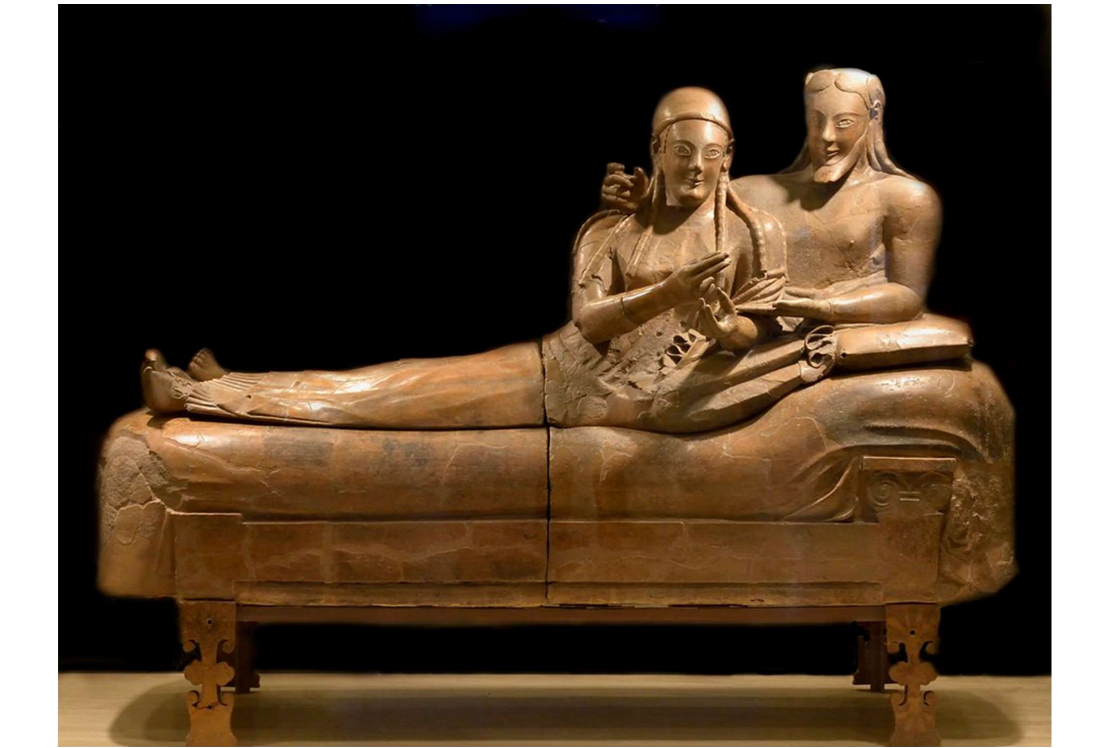
Sarcophagus of the spouse, Banditacccia necropolis at Caere, c. 525., now in the Villa Giullia museum in Rome, terracotta cinerary urn - laying on the lid
Monterozzi necropolis, Tarquinia
the Tomb of the Leopards has some of the best preserved frescoes
the Tomb of the Augurs
the Tomb of Hunting and Fishing
the Tomb of the Triclinium
the Tomb of the Blue Demons
the Tomb of the Bulls, the earliest tomb decorated with complex frescoes dated to either 540–530 BC or 530–520 BC. It is one of the rare Etruscan tombs which have erotic frescoes
the Tomb of the Whipping. It is also one of the rare Etruscan tombs which have erotic frescoes.
the Tomb of Orcus is notable for having the only known pictorial depiction of the Etruscan daemon Tuchulcha
the Tomb of the Bigas
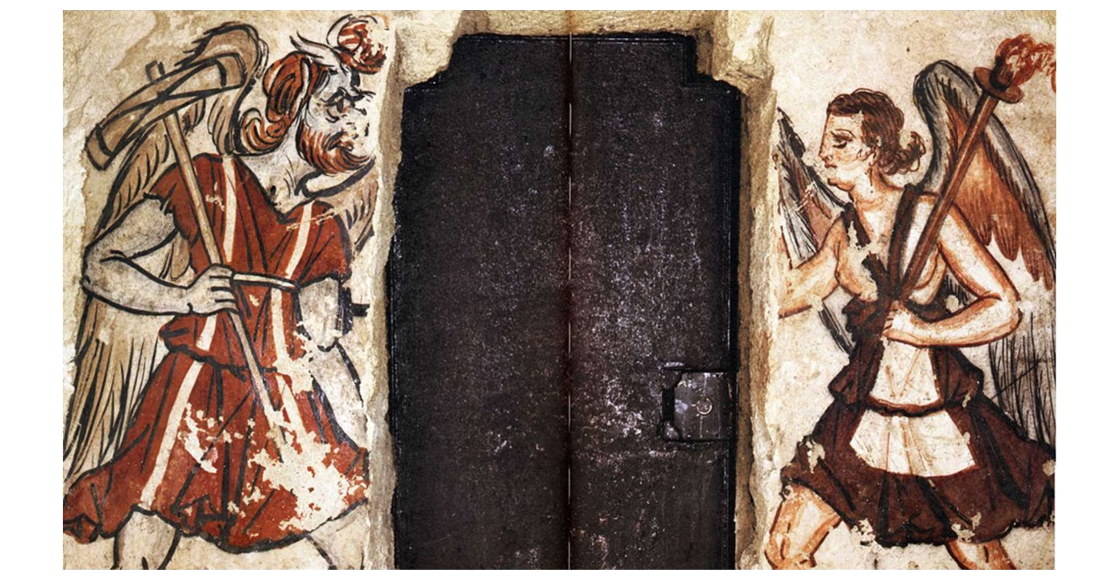
Tomb of the Anina family, Tarquinia, end of the 4th cn,
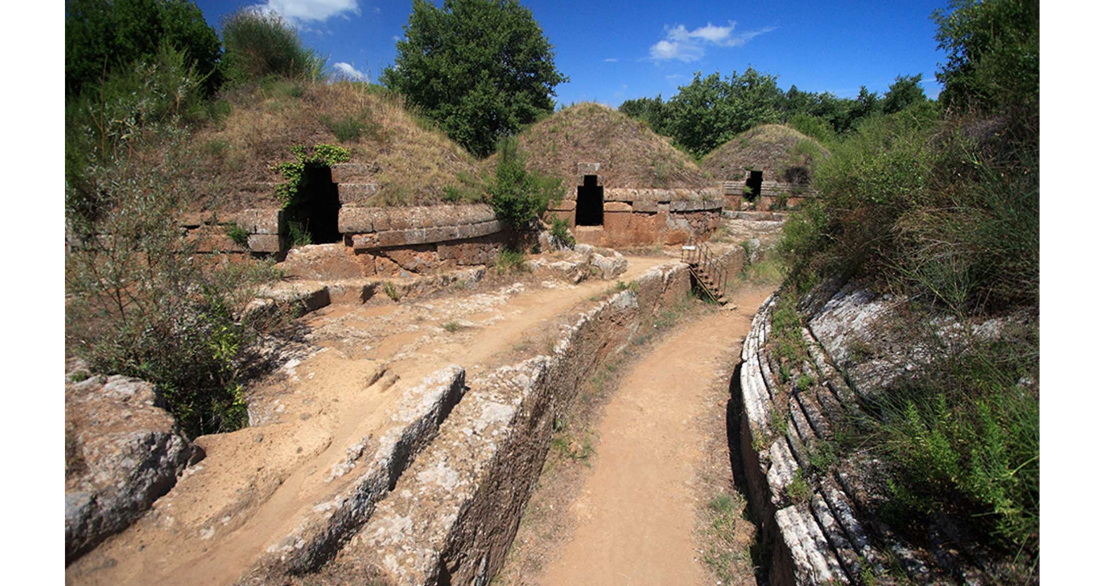
Banditaccia
Banditaccia
The tombs date from the 9th century BC (Villanovan culture) to the later Etruscan period (third century BC). The earliest tombs are in the shape of a pit, in which the ashes of the dead were housed; simple potholes are also present. From the later Etruscan period are two types of tombs: tumulus-type tymbs and the so-called "dice", the latter being simple square tombs built in long rows along roads within the necropolis. The visitable area contains two such roads, the Via dei Monti Ceriti and the Via dei Monti della Tolfa (6th century BC).
The tumuli are circular structures built in tuff, and the interiors, carved from the living rock, house a reconstruction of the house of the dead, including a corridor (dromos), a central hall and several rooms. Moder knowledge of Etruscan daily life is largely dependent on the numerous decorative details and finds from such tombs. One of the most famous tombs is the Tomb of the Reliefs, identified from an inscription as belonging to the Matuna family and provided with an exceptional series of frescoes, bas-reliefs and sculptures portraying a large series of contemporary life tools. (10)[ 11)
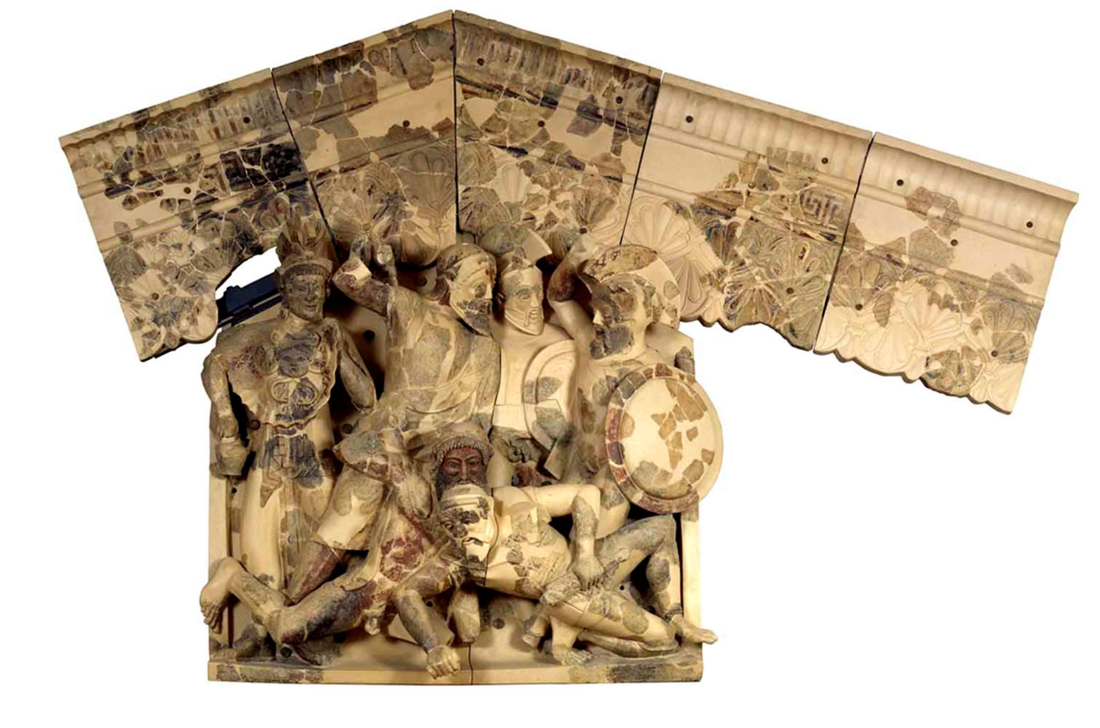
Painted terracotta relief plaque from temple A, Pyrgi, the biggest one and youngest, c. 470 B.C.
Tinia throws lightning bolt to Capne/Capaneus, while Tute/Tydeus eats the brains of his opponent Melanippus as Menvra/Athena looks in disgust. Now in Villa Giullia, Rome.
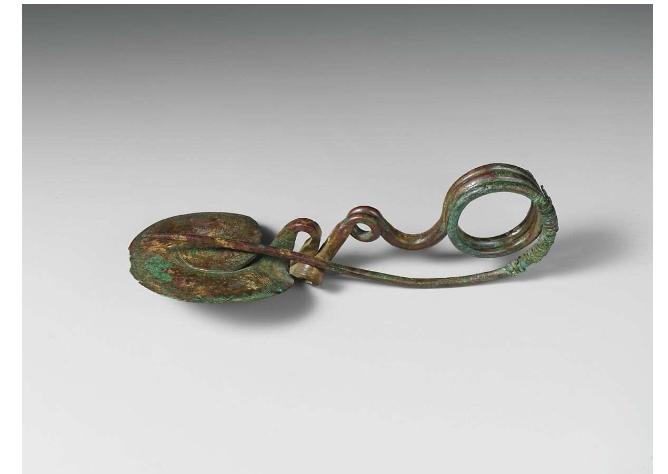
Serpentine-disc type bronze fibula, 9th c BC.
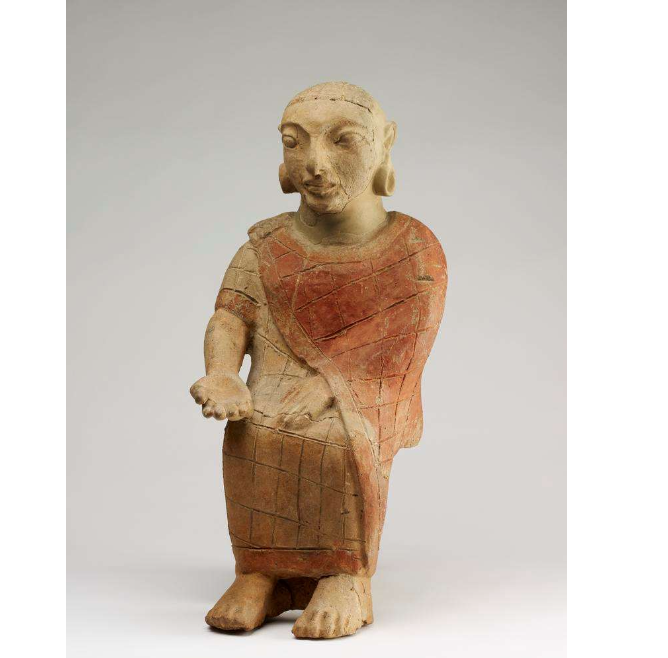
Tomb of the Five Chairs, Seated Ancestor, Caere Banditaccia necropolis, first half of the seventh c?
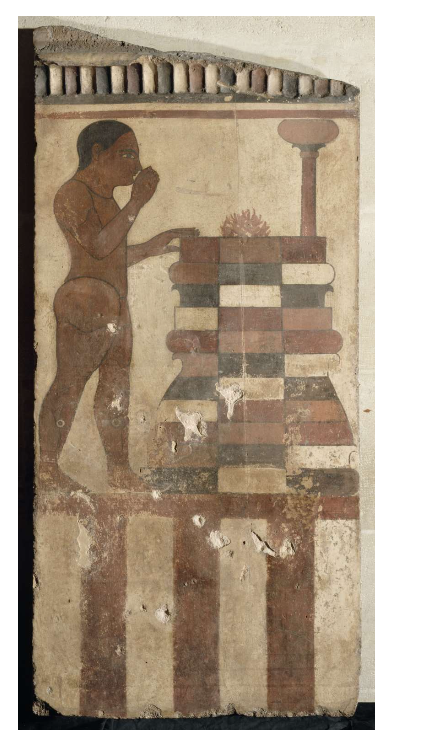
Campana panel from the Banditaccia necropolis Caere, , now in the Louvre Museum but originally from Caere c. 550-525
Campana Panel” from the Banditaccia
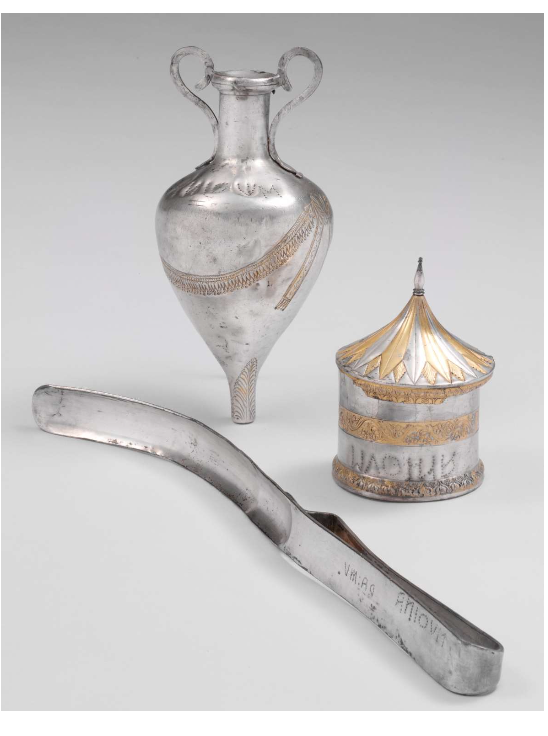
Silver and gilded silver amphoriskos, pyxis, and strigil, from the Bolsena Tomb Group. Early 3rd century BC. Metropolitan Museum of Art, New York. Retrograde punch: śuthina
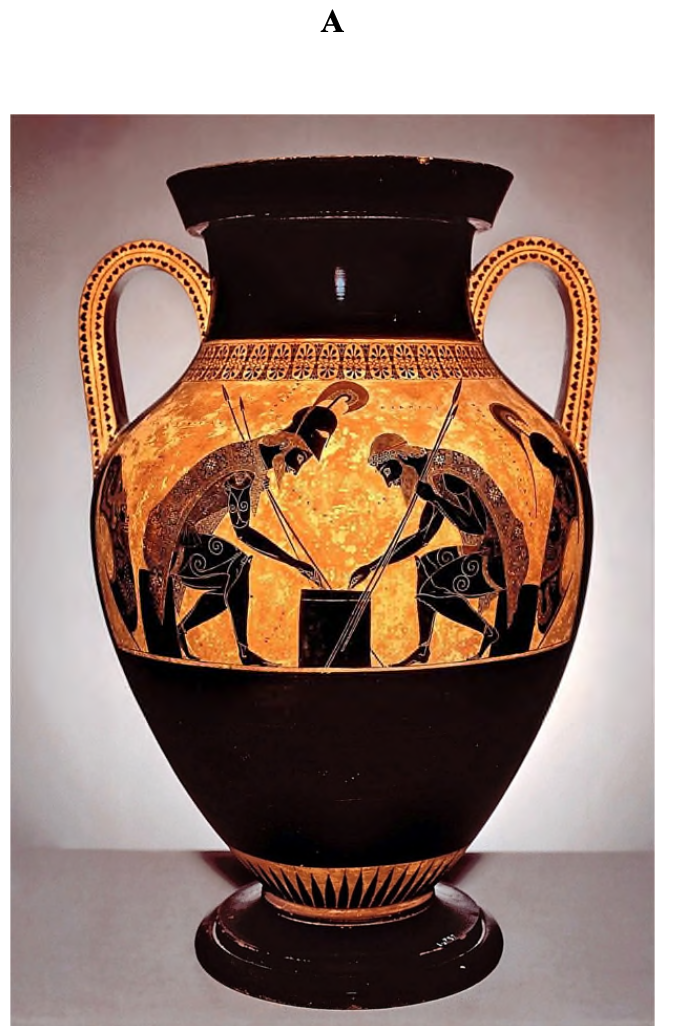
Black-figure amphora by Exekias showing Achilles and Ajax playing dice, c.550-52
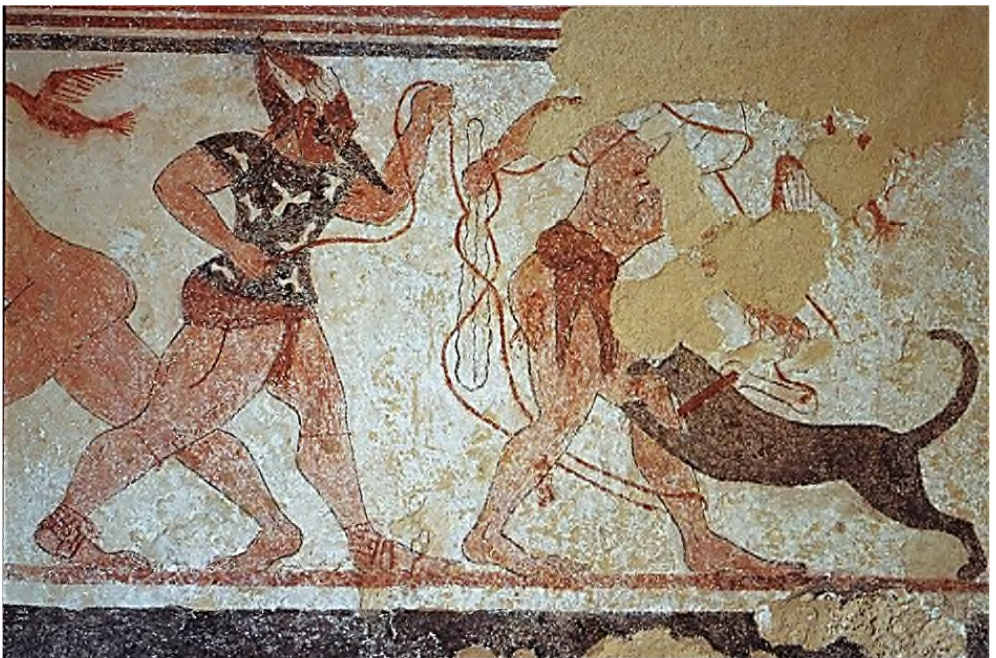
Monterozzi necropolis Tarquinia, Tomb of the Augurs, c. 520, Phersu figure. also includes a wrestling match presided over by an agonothetes holding a lituus, two mourning family members or augurs saluting the door, Phersus (masked man/actors)

Murlo cowboy, terracotta acroterion, Poggio Civitate (Murlo), c.580-575 B.C. on top of the archaic building, c. 1.5m
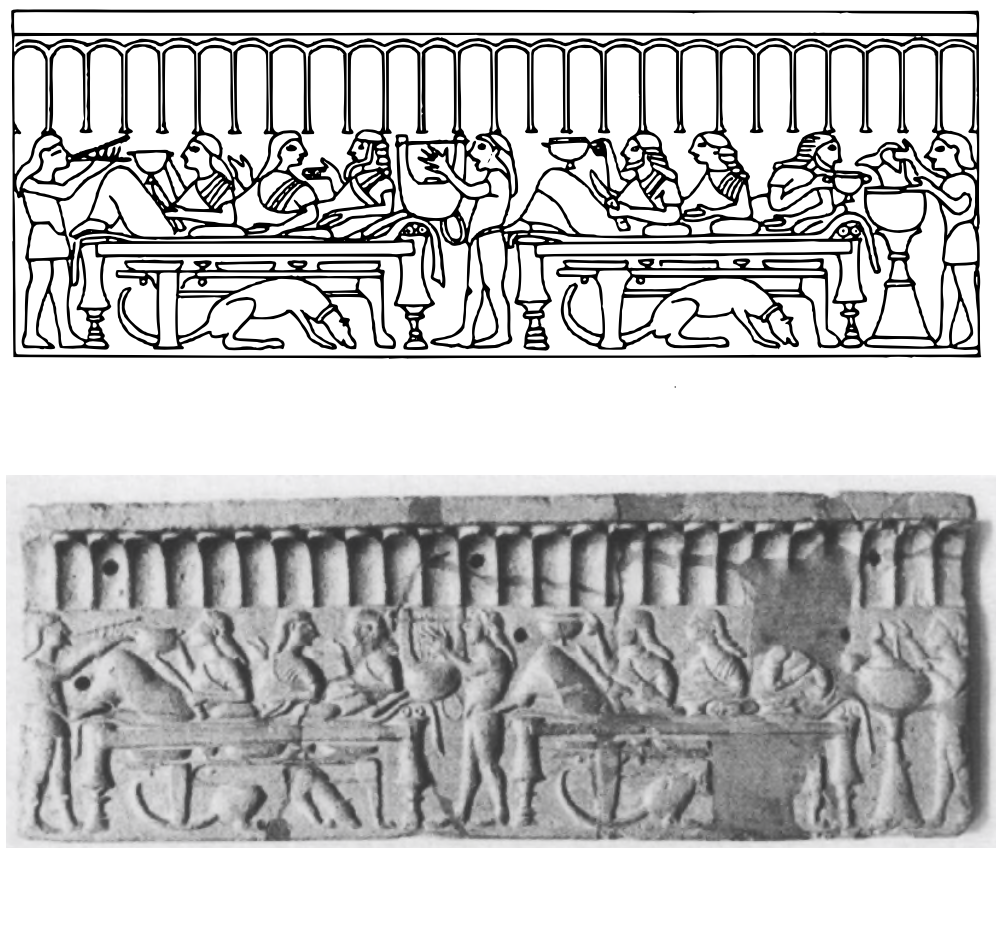
Acquarossa pediment plaque showcasing banquet, c. 560
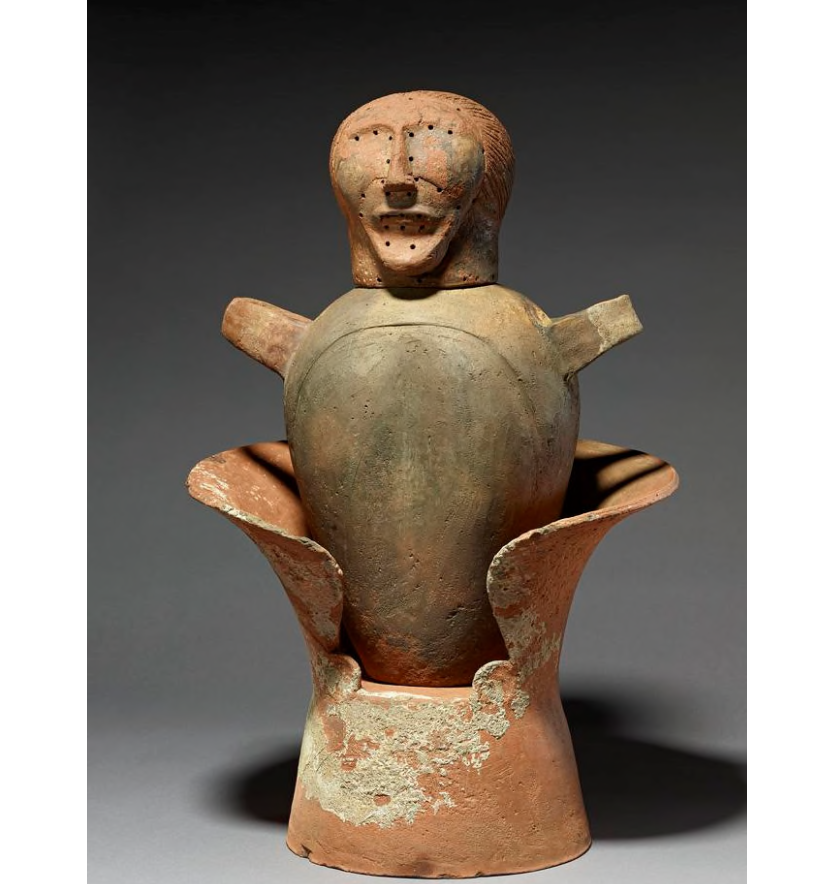
Canopic urn, terracotta, 625-600 bc, frm Chiusi now in the British museum.

bronze mirror from Atri showing Hercle abducting the lady Mlacuch, ,c. 500-475 bC, now in British museum
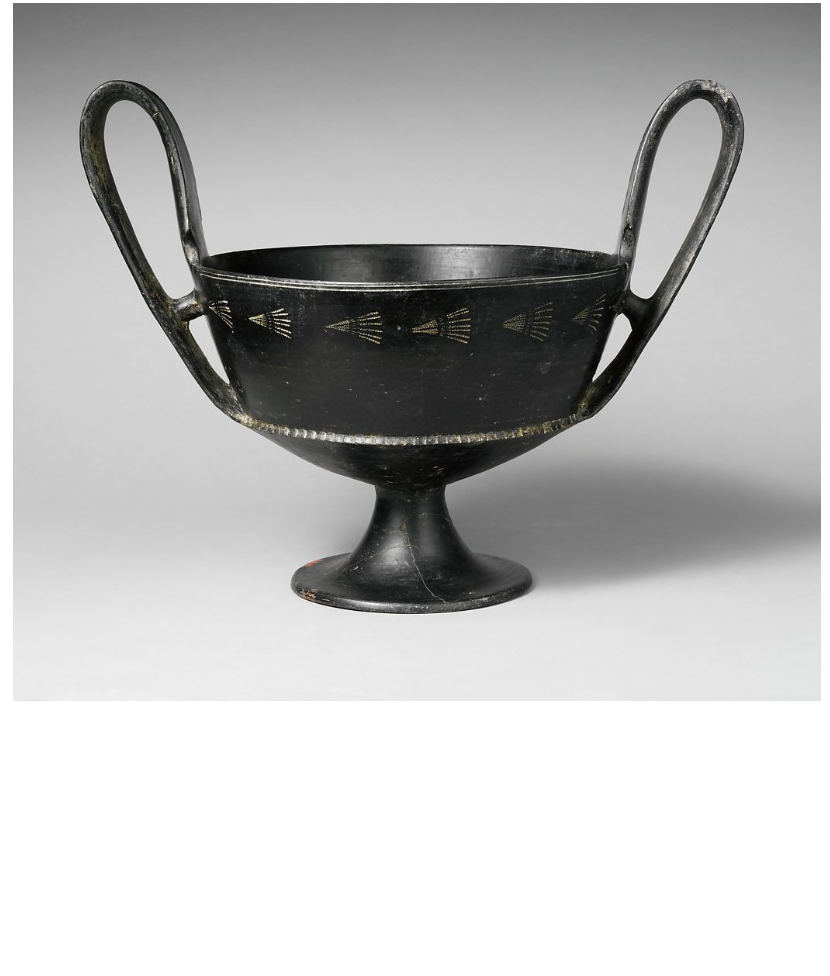
`Bucchero kantharos, second half of the seventh century

Bronze statuette of Tinia with thunderbolt, from Firenzuola (Florence), c.500 BC
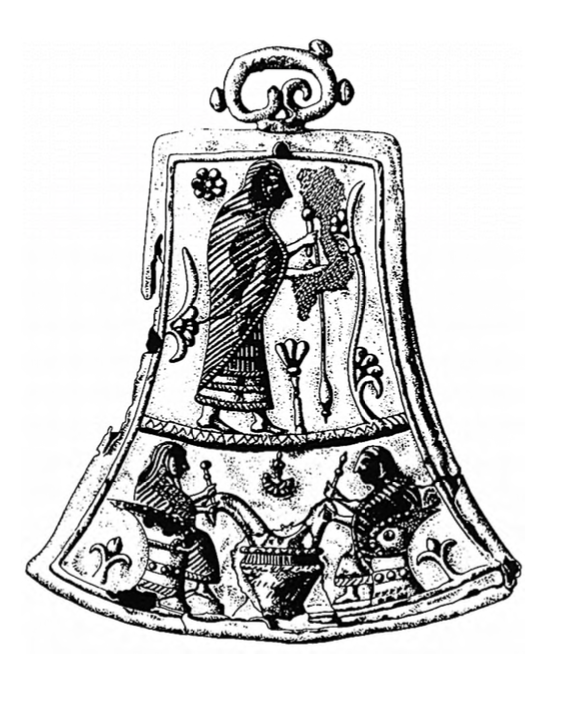
Bronze tintinabulum, embossed sheet bronze
c 625 BCE
Tomb of the Gold, Arsenal Necropolis, Bologna
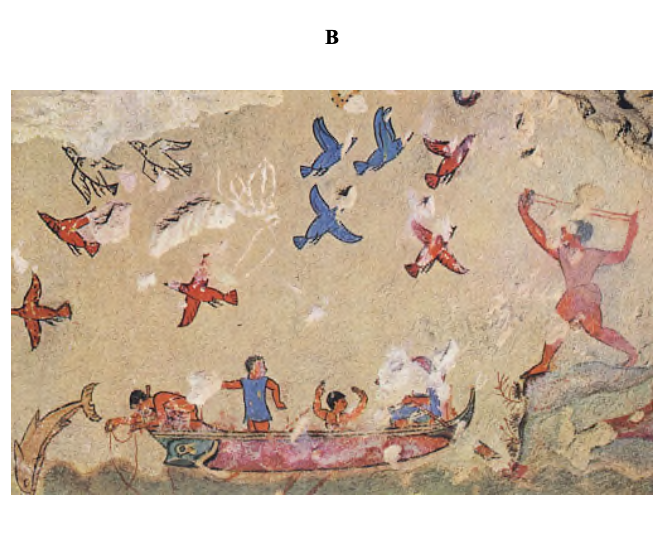
tomb of the hunting and fishing, Monterozzi necropolis Tarquinia, c 530
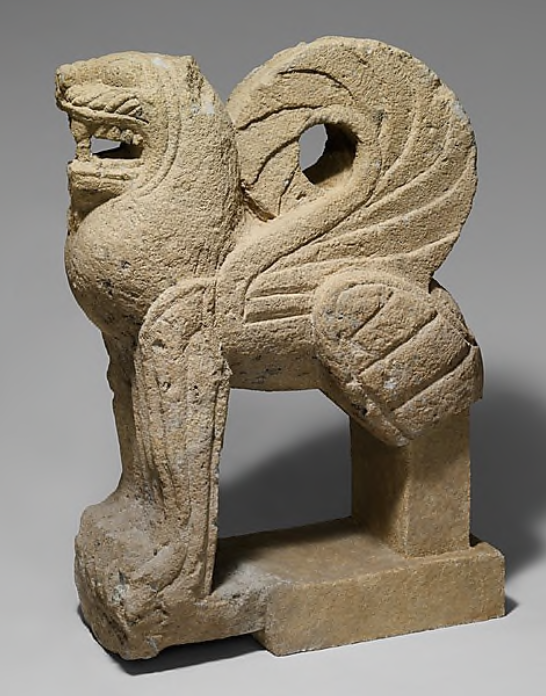
Nenfro statue of a winged lion, c. 550 BC, MET
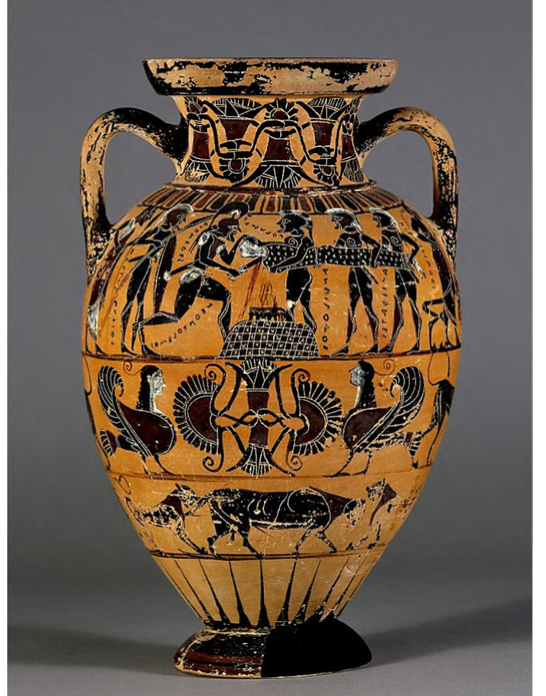
570BC-550BC (circa)(circa)black-figured amphora showing the sacrifice of the Trojan princess Polyxene
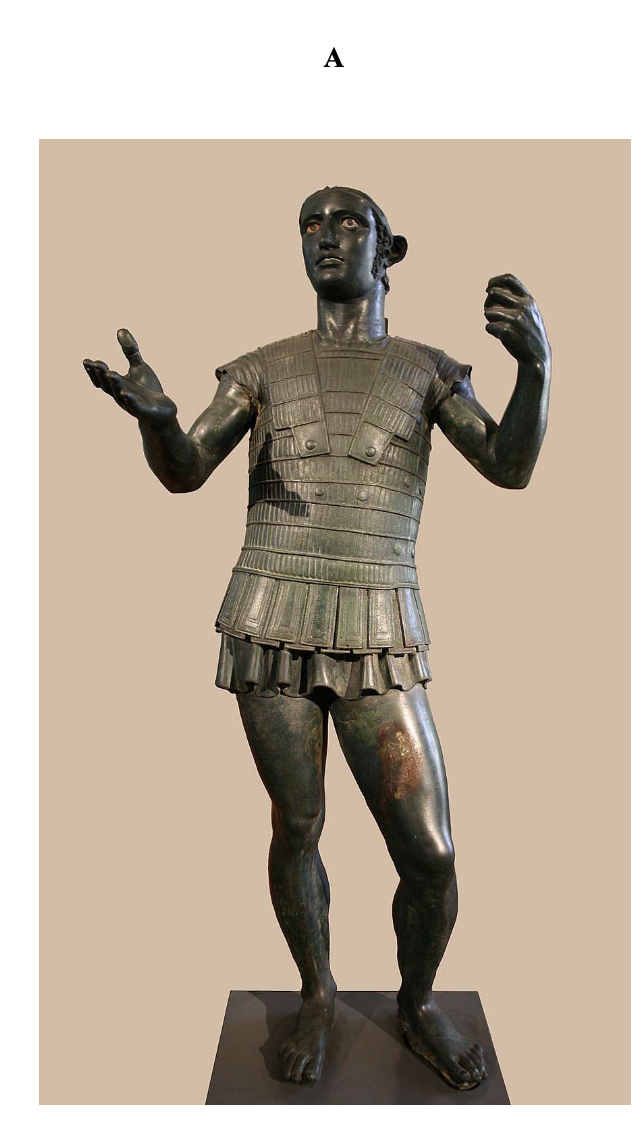
Mars of Todo, c. 410-390 B.C. now in the Museo Gregoriano Etrusco, Vatican. inscribed Etruscan bronze statue likely crafted in Orvieto, famed for its bronzes. The bronze statue bears an inscription in the Umbrian language that has been written using Etruscan characters. This dedication is inscribed on the skirt that is attached to the breastplate and reads “Ahal Trutitis dunum dede” (“Ahal Trutitis gave [this as a] gift”). The dedicant—Ahal Trutitis—has a name that is Celtic in origin, which lends this dedication of an Etruscan object in an Umbrian sanctuary a particularly cosmopolitan element.
The Mars of Todi is a rare object in that many prestige votives of its stature have not survived from antiquity. The careful burial of this object—perhaps after it had been struck by lightning—accounts for its survival. [1] The composition represents the tradition of libations made by soldiers prior to battle, an opportunity for beseeching the gods for support and success in battle. The dedication of this object is also indicative of the dynamic human landscape of ancient Italy—within that human landscape sanctuaries often served as nodal points where diverse cultures came into contact with one another. This votive statue, then, tells us a great deal not only about ritual practice and iconography, but also about those who frequented sanctuaries in ancient Italy.
Artwork
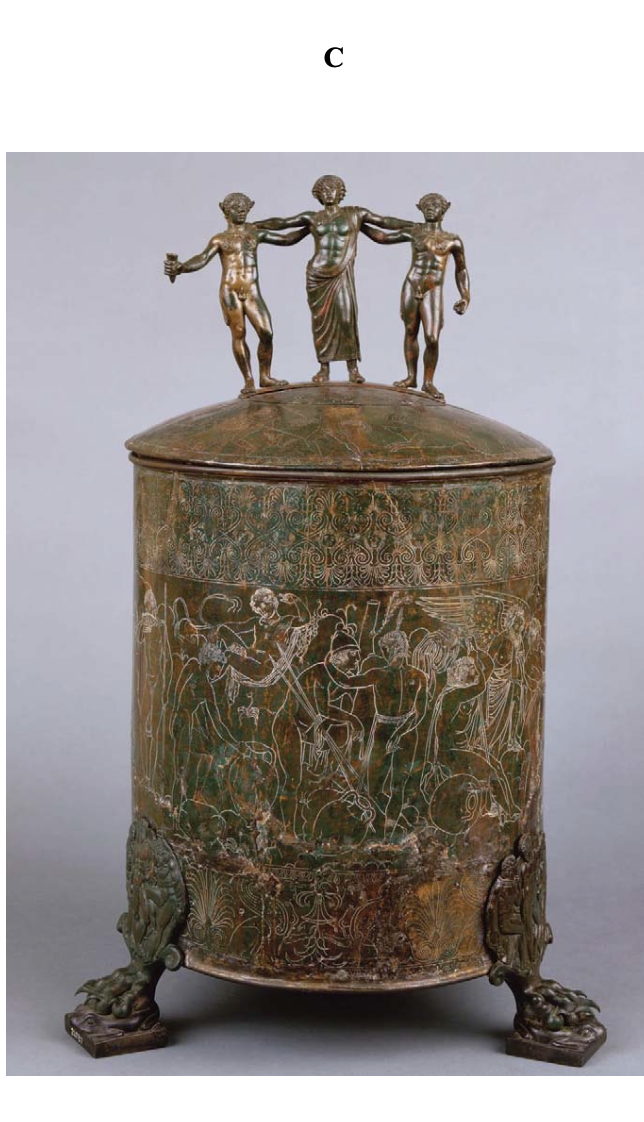
Ficoroni cista, Praeneste, late 4th c BC now in Villia Giullia, Rome, with Dionysos flanked by two satyrs on top. a scene of Jason and the argonauts, Amykos is being tied to the tree by Pollux after losing a wrestling match to the twins. Mathemethical proportions, panoramic scene.
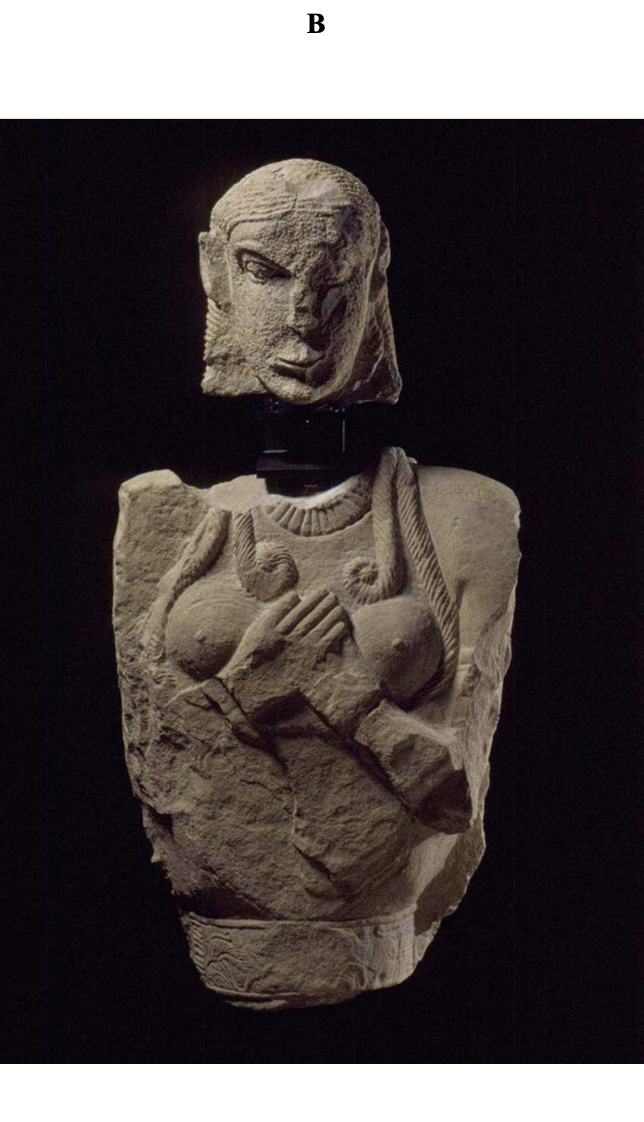
limestone statue of a woman from the Pietrera tumulus, Vetulonia, now in the archaeological museum of Florence. C. 650.
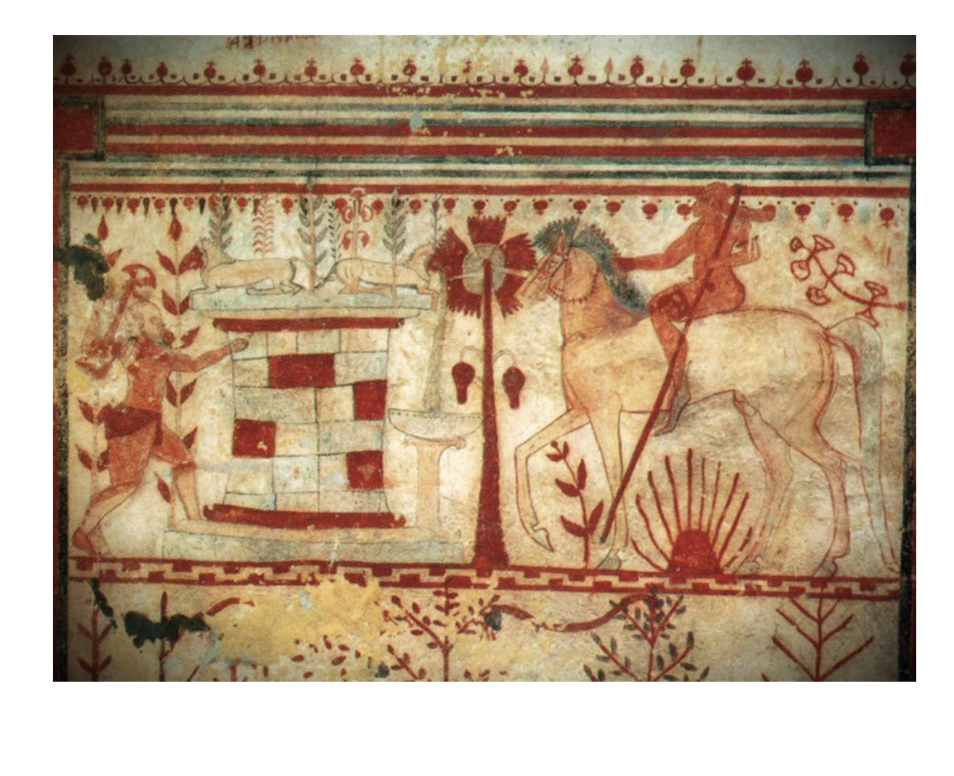
Tomb of the Bulls, Monterozzi necropolis, c. 530 BC

Canopic cinerary urn, 6th c bc, now in the MET NY. likely from Chiusi considering the example of a very simililarly styled mid-6th c BC Canopic urn from Chiusi now in the archaeological museum of Florence.
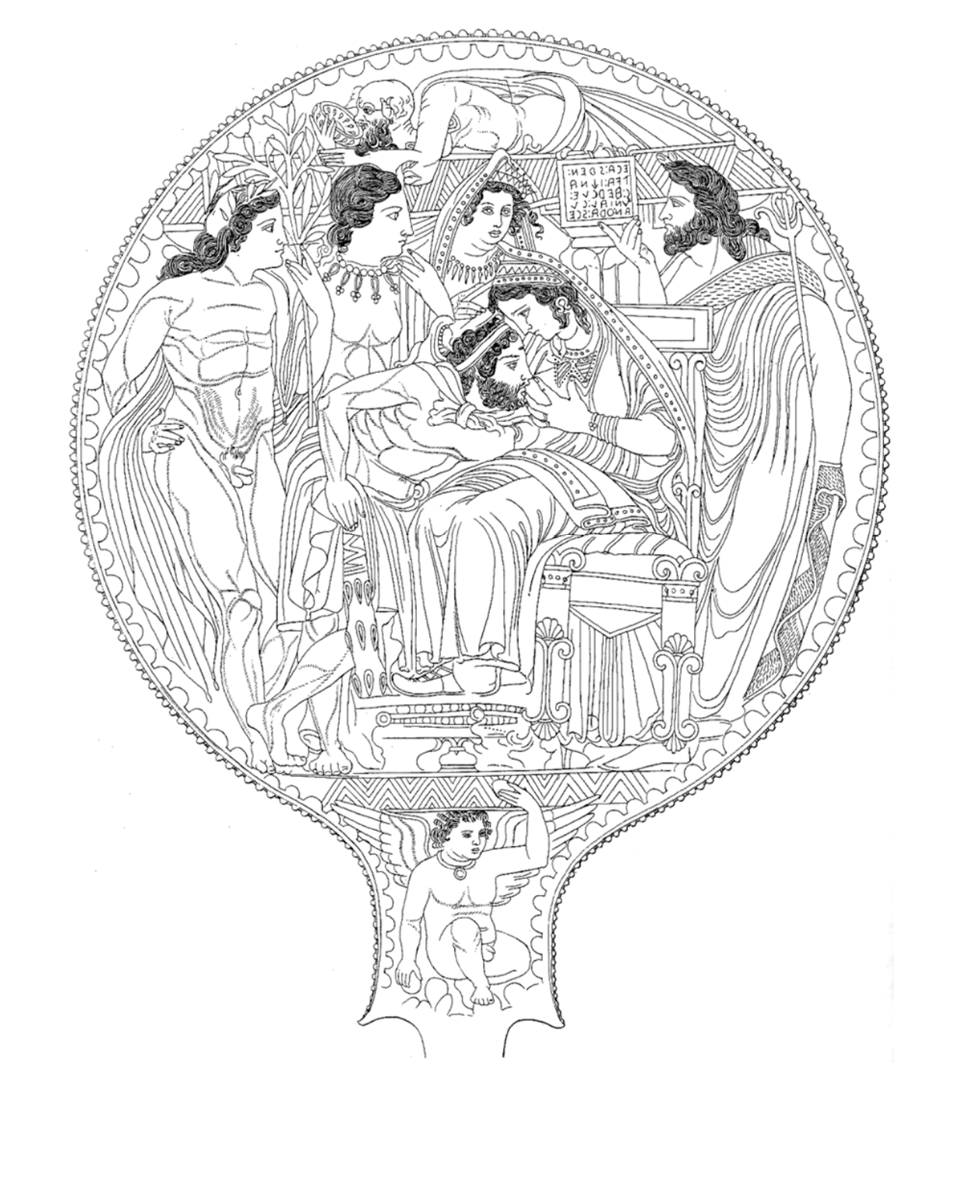
Volterran bronze mirror of Uni suckling Hercle, c 325 bc, now in the Florence National Archaeological museum. can be compared by the earlier, c. 470-375 BC bronze mirror of Uni suckling Hercle now in the Archaeological Civic Museum in Bologna
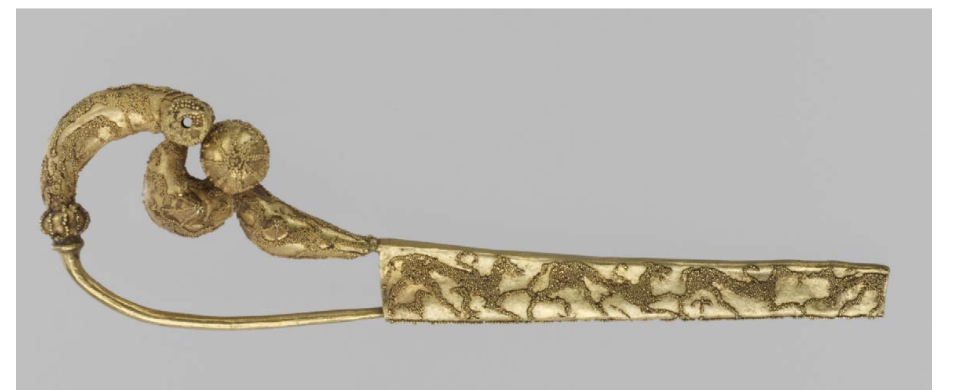
gold Serpentine fibulae with animals in granulation, from Roselle, 7th c, now in MET
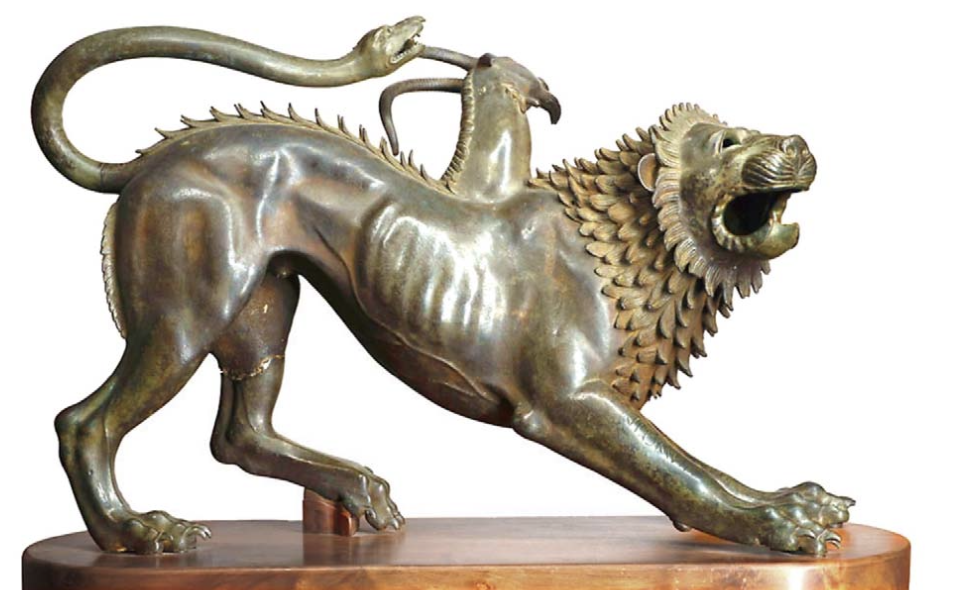
The chimaera of Arezzo, from the first half of the fourth century BCE, c. 400-350, Florence, is bronze and inscribed for Tinia after casting. It was originally part of a larger sculptural group, including a statue of Bellerophon about to slay the chimera. It was found along with a cache of small votive bronzes that further attest to the worship of the god Tinia.

Carnelian scarab of Tydeus/Tute (once called Tydeus who cleans himself with the strigil), c.500 BC. Altes Museum, Berlin. Tydeus was mortally wounded by Melanippus, the son of Astacus. The goddess Athenaintended to make Tydeus immortal, but the seer Amphiaraus, knowing this and hating Tydeus, cut off Melanippus' head and gave it to Tydeus, who proceeded to eat the brains of his killer. father of diodes, and one of the Seven against Thebes.
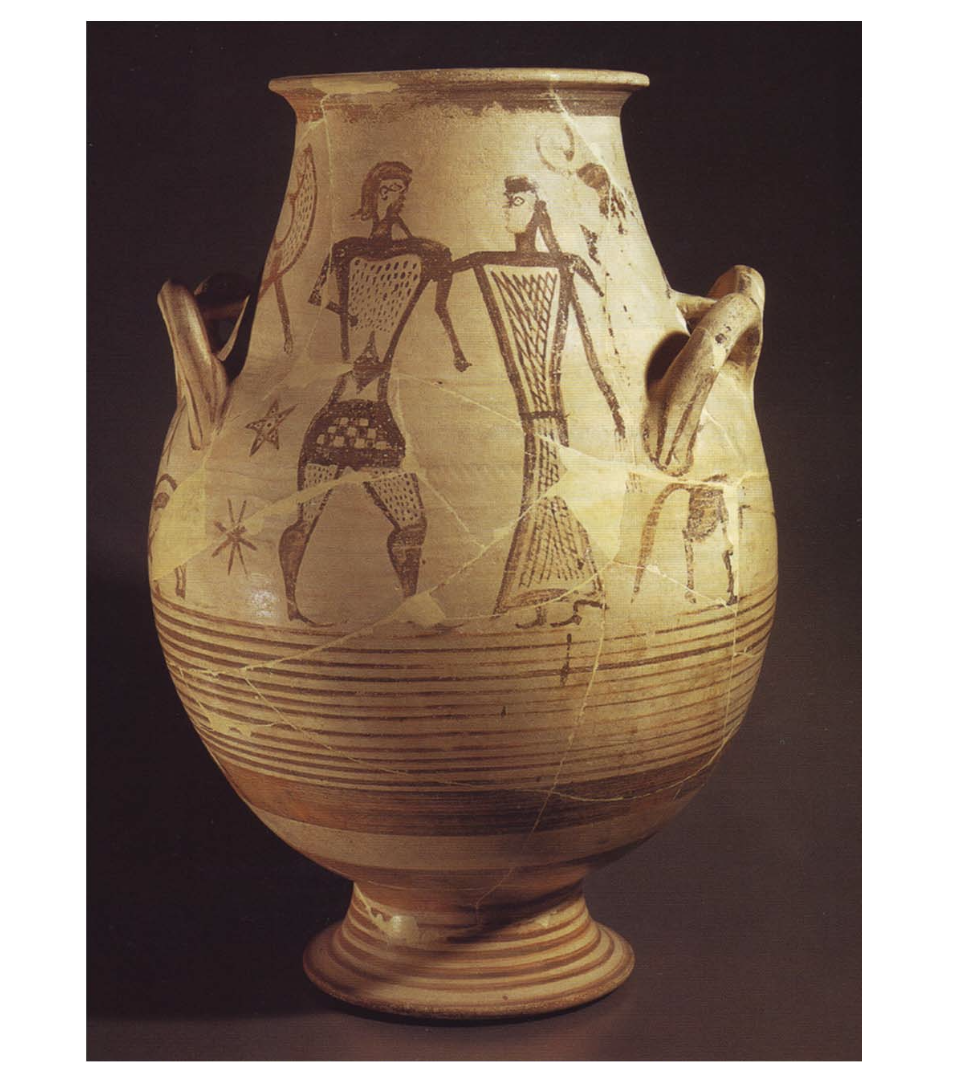
Biconic krater by the painter of the Heptachord. Cerveteri. 7th c.
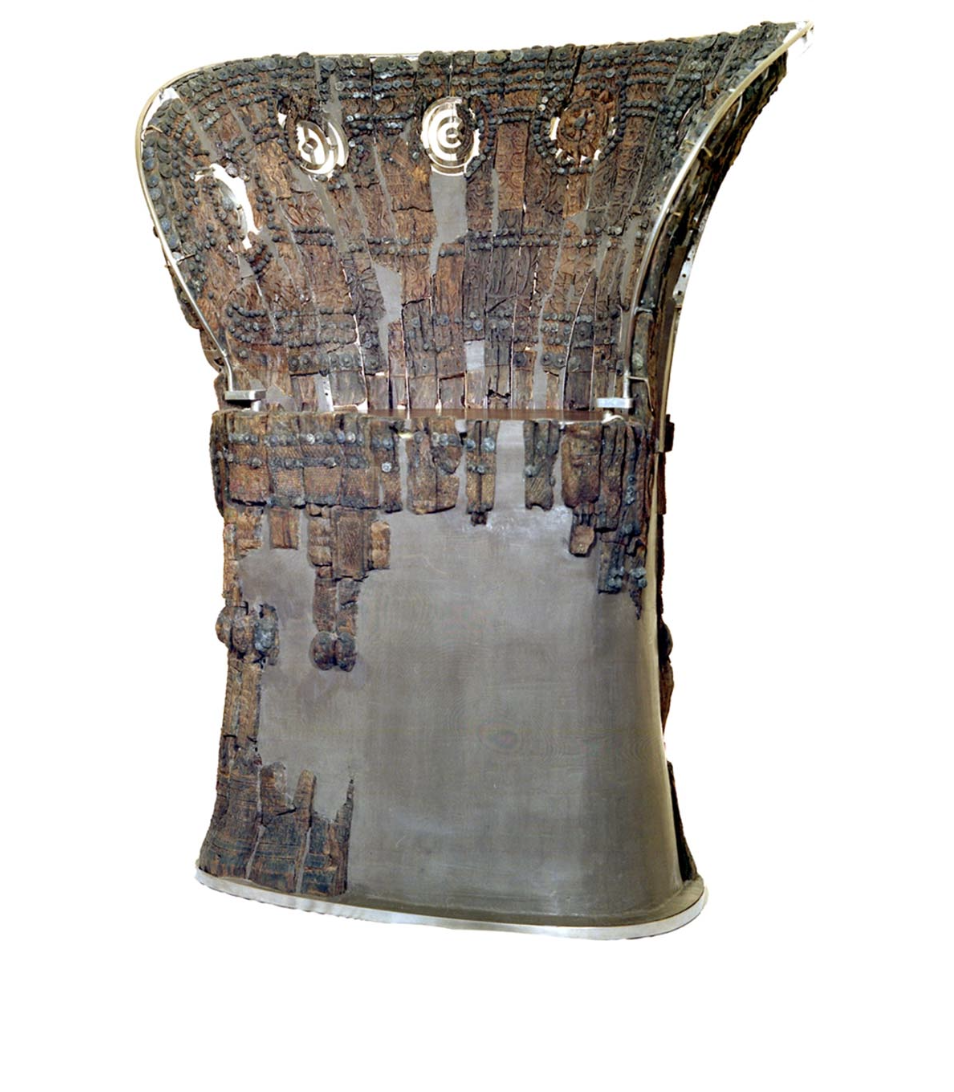
Verucchio throne, 700-650

Fragment of a wall painting in the Tomb of the Infernal Chariot, depicting a triple serpent with a cockscombe. In Sarteano, 4th c BC. features an angry woman dressed in red surrounded by shadows riding a chariot chasing down a man, a hippocampus, and a serene banquet .
Regolini-Galassi tomb
Caere, C. 680-650, one of the richest Orientalizing tombs in Etruria, much gold. carriage and bedstead, bucchero statuettes of mourners, a bronze cauldron with 6 protruding griffin-like heads, three carts, now visible following the 2013 restoration works: a chariot, a cart for seated passengers and one heavy cart used to transport the coffin.
This, the most ancient tomb, was subsequently incorporated into a more imposing mound with a larger diameter, including another five tombs, which continued to be used for at least another two centuries, until the first half of the fifth century B.C., probably by the same noble family.
Gregorian Etruscan Museum
675-650 B.C.
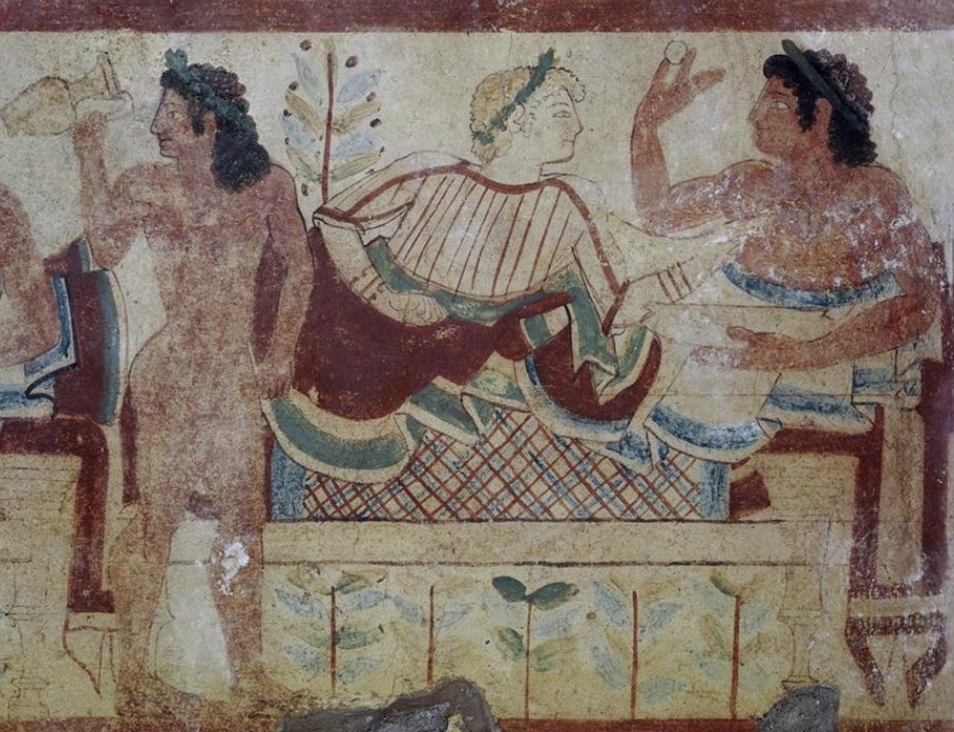
tomb of the Leopards, Monterozzi necropolis Tarquinia , 590?
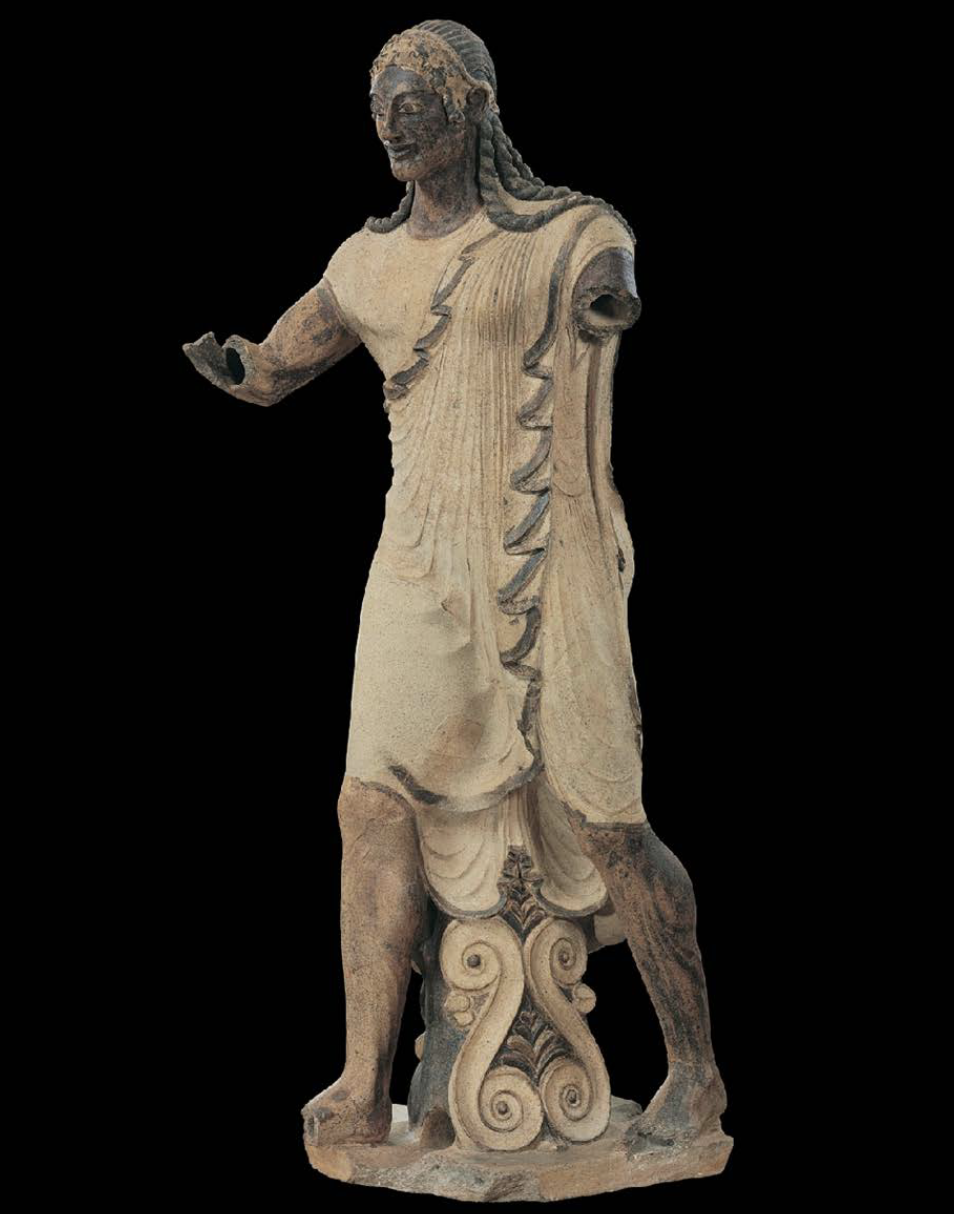
Apollo of Veii, Portonaccio temple, 510-500, Veii, now in Villa Giulia. Terracotta acroterial statue, also one of heracles and the hInd and a goddess bearing a child. Applu. 180 cm
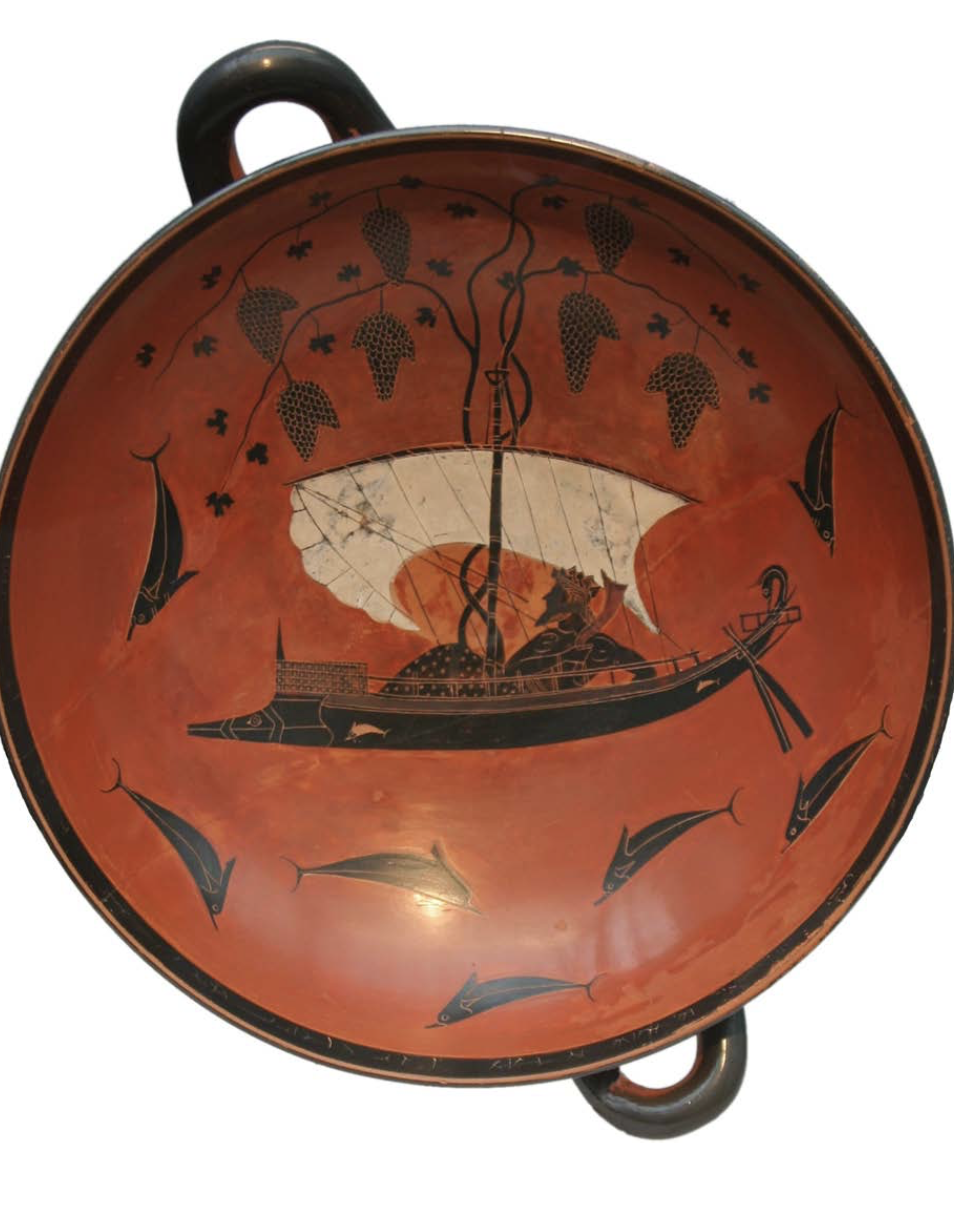
et, by Exekias, c.530 BC, found at Vulci.
Munichhe Dionysus Eye Cup is the modern name for one of the best known works of ancient Greek vase painting, a kylix (drinking cup) dating to 540–530 BC. It is one of the masterpieces of the Attic black-figure potter Exekias and one of the most significant works in the Staatliche Antikensammlungen in Munich. ost common is the suggestion that is a reference to the seventh Homeric Hymn, in which it is explained how Dionysus was kidnapped by Etruscanpirates, who were unaware of his identity. The god confuses their thoughts and causes them to jump into the water, where they transform into dolphins., Antikensammlunge
finds from Pyrgi
cosmopolitan city with a great port. two temples, temple B c. 510 BC, Temple A: c. 470 BC. Temple B was commissioned around 510 BC by the king of Caere, Thefarie Velianas and consisted of a single cella of Greek inspiration surrounded by columns on all sides. According to the inscriptions of the gold tablets, the Pyrgi tablets, the temple was dedicated to the Phoenician goddess Astarte (or Uni in Etruscan according to the tablets), warrior goddess and dispenser of love associated with the Greek Ilithyia. Connected with the temple was a wide building with twenty cells where the deitys' priestesses lived. The poet Lucilius referred to them as the "prostitutes of Pyrgi" (scorta Pyrgensia).[20]
On the left of the temple a small precinct "C" with cylindrical altar contained a pit consecrated to the underworld cult of Tinia (the Etruscan version of Jupiter) who is mentioned along with Uni in one of the bronze inscriptions found in the same enclosure together with the gold sheets.
Temple A, more imposing than "B", was built around 470-460 BC also on the initiative of the City of Caere to reaffirm its dominion after being defeated by the Syracusans at Cumae in 474 BC. It was dedicated to Thesan, the Etruscan goddess of dawn, associated with Leucothea, goddess of the sea and sailors. It had an Etruscan plan with cella and alae at the back, three rows of columns at the front, and was decorated with the magnificent mythological high relief of the "Seven against Thebes" in which Tydeus devours the skull of his opponent Melanippus.
Pyrgi tablets, c. 500 The text records the foundation of a temple and its dedication to the Phoenician goddess Astarte, who is identified with the Etruscan supreme goddess Uni in the Etruscan text. The temple's construction is attributed to Thefarie Velianas, ruler of the nearby city of Caere.[1]
this is the holy place, which was made, and which was placed (by) Tiberius Velianas, king over Kasriye (= Caerites?),
yrḥ zbḥ šmš, bmtnʼ bbt.
during the month of the sacrifice to the Sun, as an offering in the temple.[10]
wbn tw, kʻštrt ʼrš bdy, lmlky šnt šlš ///, byrḥ krr, bym qbr ʼlm
And he built a chamber (or -bn TW = "Tiberius Velianas built (it)"),[11] because Astarte requested (this) from him, year three "3" of his reign, in the month of Krr, on the day of the burial of the divinity.
wšnt lmʼš ʼlm bbty šnt km h kkb m ʼl.
And (may) the years of the statue of the deity in her temple (be) years like (or "as numerous as") the stars.[12][13][14]
![<p>cosmopolitan city with a great port. two temples, temple B c. 510 BC, Temple A: c. 470 BC. Temple B was commissioned around 510 BC by the king of Caere, Thefarie Velianas and consisted of a single cella of Greek inspiration surrounded by columns on all sides. According to the inscriptions of the gold tablets, the Pyrgi tablets, the temple was dedicated to the Phoenician goddess Astarte (or <em>Uni</em> in Etruscan according to the tablets), warrior goddess and dispenser of love associated with the Greek Ilithyia. Connected with the temple was a wide building with twenty cells where the deitys' priestesses lived. The poet Lucilius referred to them as the "prostitutes of Pyrgi" (scorta Pyrgensia).<span><sup>[</sup></span><sup>20</sup><span><sup>]</sup></span></p><p>On the left of the temple a small precinct "C" with cylindrical altar contained a pit consecrated to the underworld cult of Tinia (the Etruscan version of Jupiter) who is mentioned along with Uni in one of the bronze inscriptions found in the same enclosure together with the gold sheets.</p><p>Temple A, more imposing than "B", was built around 470-460 BC also on the initiative of the City of Caere to reaffirm its dominion after being defeated by the Syracusans at Cumae in 474 BC. It was dedicated to Thesan, the Etruscan goddess of dawn, associated with Leucothea, goddess of the sea and sailors. It had an Etruscan plan with cella and <em>alae</em> at the back, three rows of columns at the front, and was decorated with the magnificent mythological high relief of the "Seven against Thebes" in which Tydeus devours the skull of his opponent Melanippus.</p><p><br>Pyrgi tablets, c. 500 <span>The text records the foundation of a temple and its </span>dedication<span> to the </span>Phoenician<span> goddess </span>Astarte<span>, who is identified with the </span>Etruscan<span> supreme goddess </span>Uni<span> in the </span>Etruscan<span> text. The temple's construction is attributed to Thefarie Velianas, ruler of the nearby city of </span>Caere<span>.<sup>[</sup></span><sup>1</sup><span><sup>]</sup></span></p><p>this is the holy place, which was made, and which was placed (by) Tiberius Velianas, king over Kasriye (= Caerites?),</p><p><strong><em>yrḥ zbḥ šmš, bmtnʼ bbt</em>.</strong></p><p>during the month of the sacrifice to the Sun, as an offering in the temple.<span><sup>[</sup></span><sup>10</sup><span><sup>]</sup></span></p><p><strong><em>wbn tw, kʻštrt ʼrš bdy, lmlky šnt šlš ///, byrḥ krr, bym qbr ʼlm</em></strong></p><p>And he built a chamber (or <em>-bn TW</em> = "Tiberius Velianas built (it)"),<span><sup>[</sup></span><sup>11</sup><span><sup>]</sup></span> because Astarte requested (this) from him, year three "3" of his reign, in the month of Krr, on the day of the burial of the divinity.</p><p><strong><em>wšnt lmʼš ʼlm bbty šnt km h kkb m ʼl</em>.</strong></p><p>And (may) the years of the statue of the deity in her temple (be) years like (or "as numerous as") the stars.<span><sup>[</sup></span><sup>12</sup><span><sup>][</sup></span><sup>13</sup><span><sup>][</sup></span><sup>14</sup><span><sup>]</sup></span></p><p><br></p>](https://knowt-user-attachments.s3.amazonaws.com/416afba9-66ba-4002-95c7-7452831fd195.png)
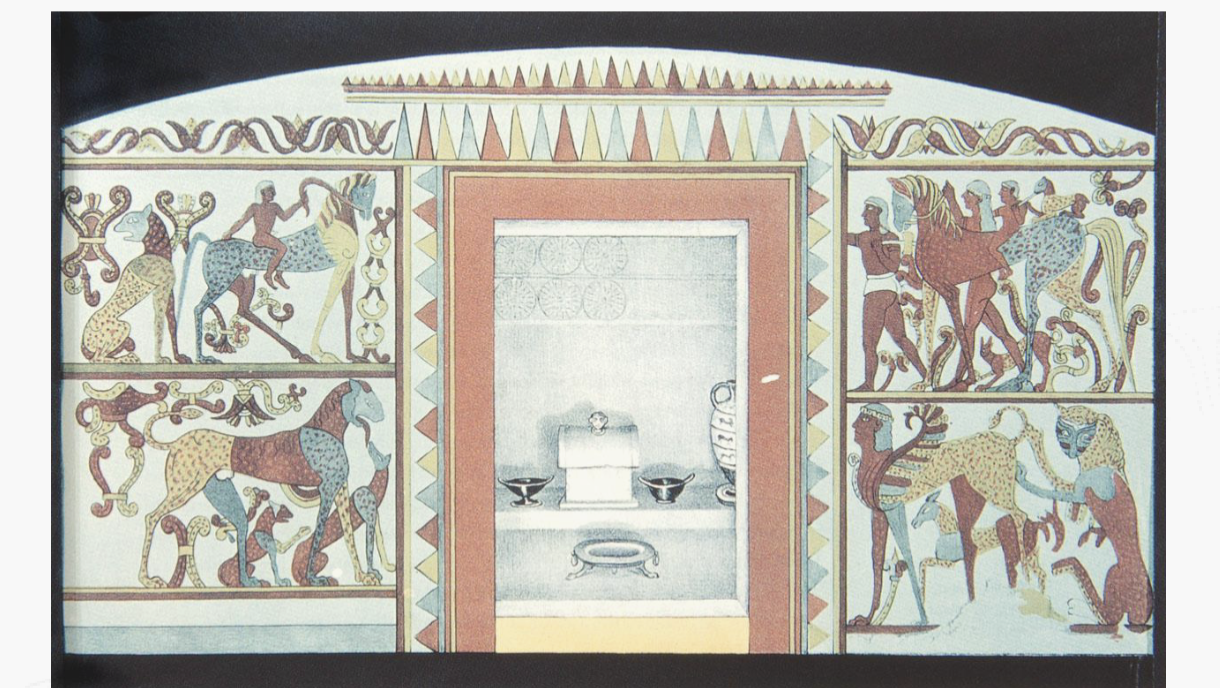
Campana Tomb, Monte Michele, Veii, c. 600 BC
Tomb of the Ducks
Veii, c. 680
Bocchoris tomb
faience vase with hieroglyphs including the cartouche of the pharaoh Bocchoris. Late 8th c BC, found in a tomb in Tarquinia. The vessel, often also labelled as situla and made of Egyptian faience, bears an inscription with the names of the 24th Dynasty pharaoh Wahkare BakenrenefAncient Greek: Bocchoris) who ruled about 720 to 715 BC.
It shows the king between the Egyptian goddess Neith and the god Horus in the middle register, on one side and on the other between Horus and Thoth. In the lower register are shown Kushite prisoners between monkeys eating dates from palm trees, a depiction which was considered by Egyptologist Toby Wilkinson as racial propaganda.
the tomb owner might be a woman judging from the objects found: gold foil plaques might have adorned clothing; many Egyptian beads were found (two beads show the Egyptian god Bes): there were bronze and pottery vessels. 5) Due to the Bocchoris vase being the best known object from the tomil.by metonymy the whole tomb is often called "Bocchoris Tomb", Oldespite not having any connection with the actual burial place of king Bakenrenef/Bocchoris, which is still unknown.
bocchoris tomb is from the 7th c
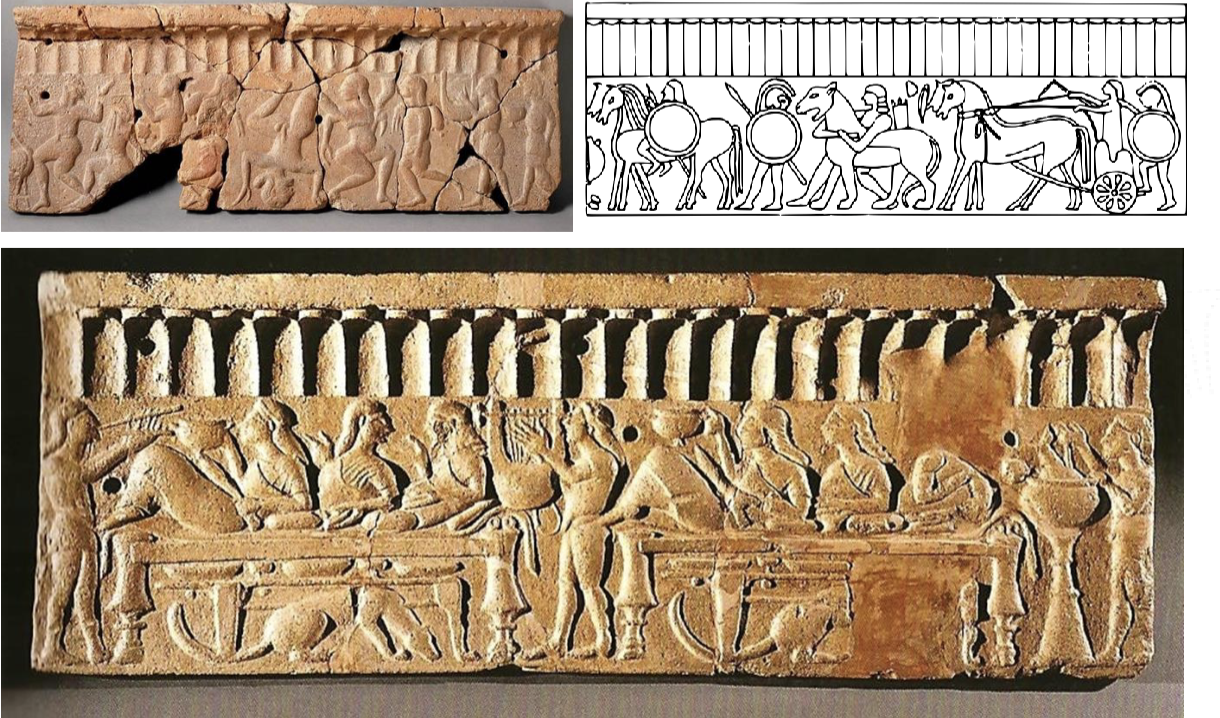
Acquarossa, terracotta revetment plaques, buildings A-C, mid 6th c bc
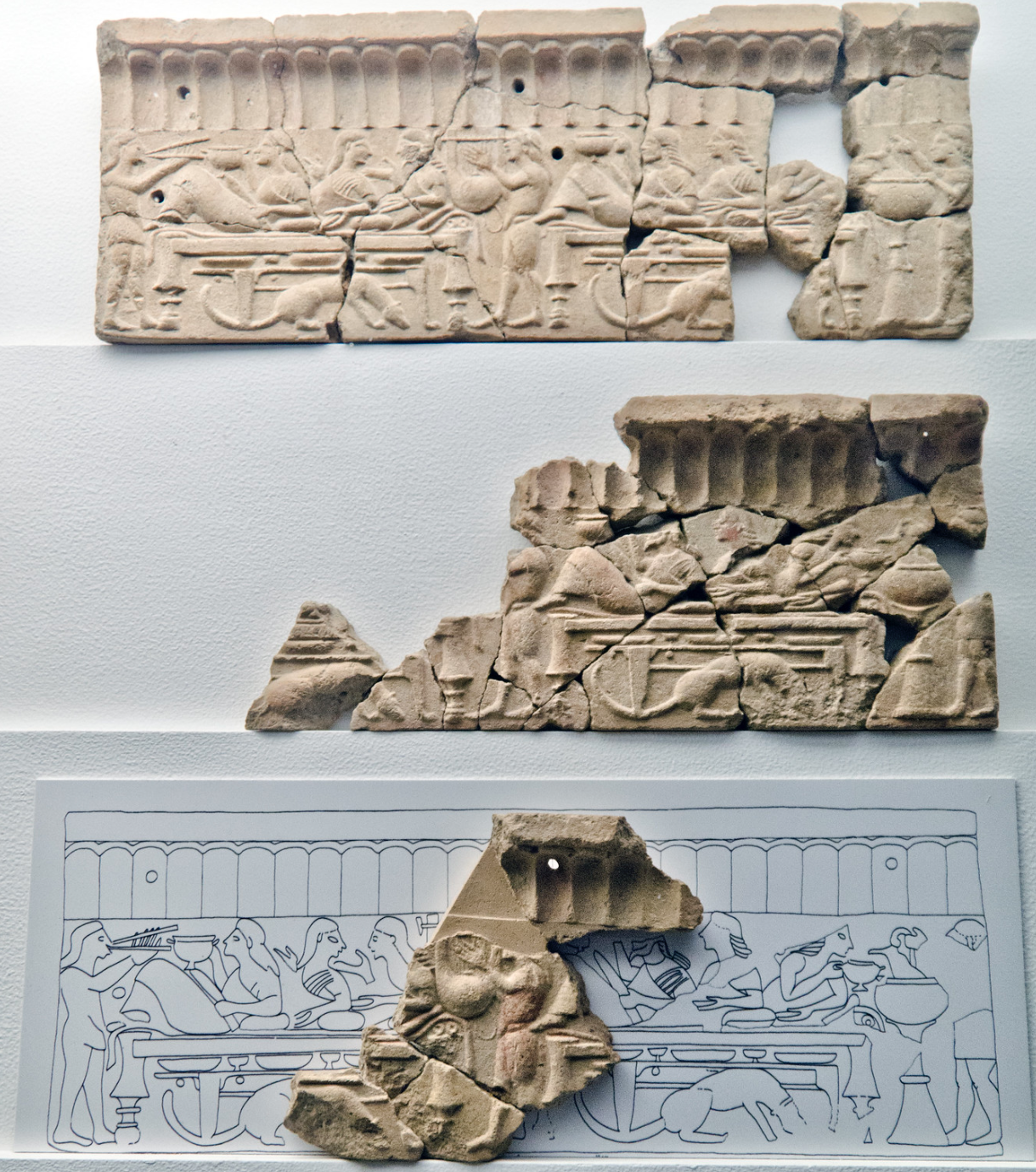
acquarossa revetment plaques, mid 6th c
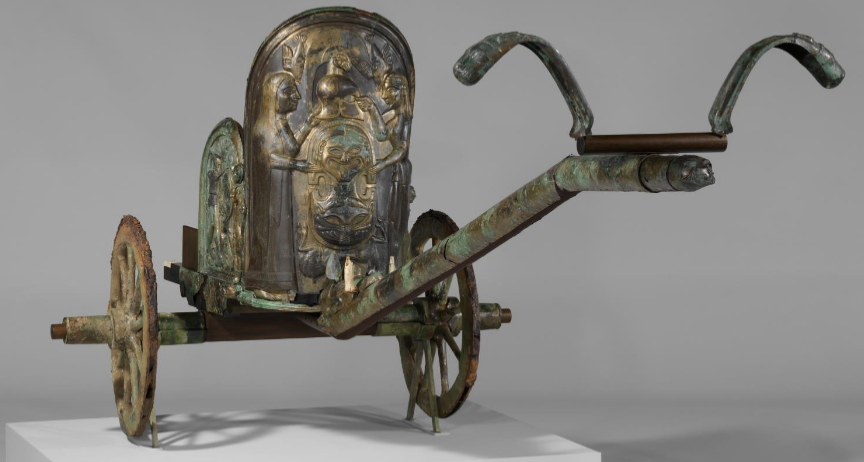
bronze chariot inlaid with ivory supported by a wooden framework, from Monteleone di Spoleto. c. 530 BC, now in the MET.
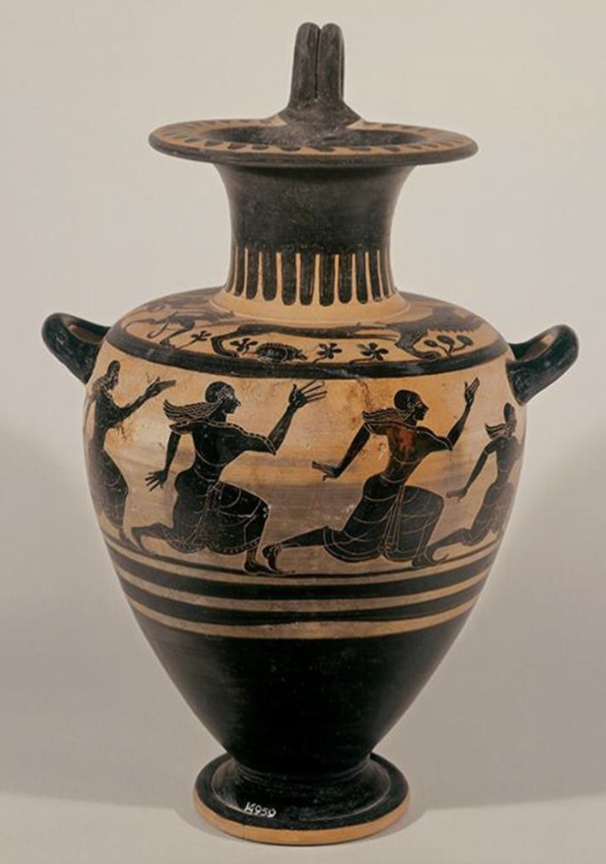
Black-figure painting amphora painted by the Etruscan Micali painter, c. 500 BC. now in the Tarquinia National Archaeological Museum.
Tomb of Orcus II
325 BC
ts entrance is guarded by paintings of "Charun" (Charon), the keeper of the underworld, and a cyclops (possibly Polyphemus or Geryon), a funeral procession overseen by "Aita" (Hades), the Etruscan god of the underworld, and his wife
"Phersipnei" (Persephone). The left wall is believed to depict Agamemnon, Tiresias, and Ajax in the underworld.
"Thesel, (Theseus) and the Etruscan equivalent of Pirithousare seated at a table on the right wall, playing a board game, where they are threatened by the Etruscan demon "Tuchulcha", who is pictured with pointed ears, a hairy face, and a hooked beak, wielding snakes in his hands. The tomb is unique in that it bears the only known historical portrayal of this demon. (1)
Tomb of the Shields
third quarter of the fourth century B.C., Monterozzi.
The layout simulates that of a house with a central atrium opening onto three rooms, one at the back and two on the sides.
Only the central chamber and the room at the back are decorated.
The underground tomb features numerous painted inscriptions, mainly referring to the Velcha family, the tomb's owners, an important and powerful Tarquinian 'gens' also known from the tomba dell'Orco (Tomb of Orcus). which feature two couples. The first couple consists of a man reclining on a kline (burial bed) and a woman seated at his feet, identified as Larth Velcha, the tomb's founder, and his wife Velia Seithiti. Next to the couple, the founder's parents, Velthur Velcha and Ravnthu Arpthnai, are portrayed.
Francois Tomb
Vulci, c. 325, includes mythological and historical scenes, some unknown and Etruscan:
owner of the Tomb, Vel Satnies, standing with his servant Arnth
Masterna freeing Caelius Vibenna, the sacrifice of the Trojan Prisoners, and Ajax raping Cassandra
suthina
Through the act of inscribing the word suthina, meaning “for the tomb,” pottery, jewelry, and metal objects such as weapons, armor, mirrors, and vessels were thereby “transformed” and designated for use by the deceased in the afterlife (1972.118.87). Some objects were probably made or purchased expressly for burial and inscribed during or shortly after production. Others, however, may have been personal possessions that were inscribed upon the individual’s death and burial
Who identified the geometric pattern on Biconical Ash Urns as representing what patterns?
Hencken has suggested that they represent patterns of seated human pairs
When hut architecture?
9th and 8th centuries
Tomb of the Reliefs
Caere, c. 350-25 B.C., Banditaccia necroplois
The walls and the two freestanding pilasters are decorated with stucco reliefs of objects from daily life. These include household items, pets and other animals. Some objects symbolize the Matuna family's power as magistrates, such as an ivory folding chair, horns and a lituus. Their martial prowess is shown by the various helmets, armors, shields and weapons. The decorations give a realistic impression of the interior of Etruscan houses. Because cupboards were not known, everything was hung up on walls. The only piece of furniture is a chest at the foot of the central niche in the rear wall. This might have been used to store valuables. The folded material on top of this chest might depict linen used for writing, such as religious texts or family record
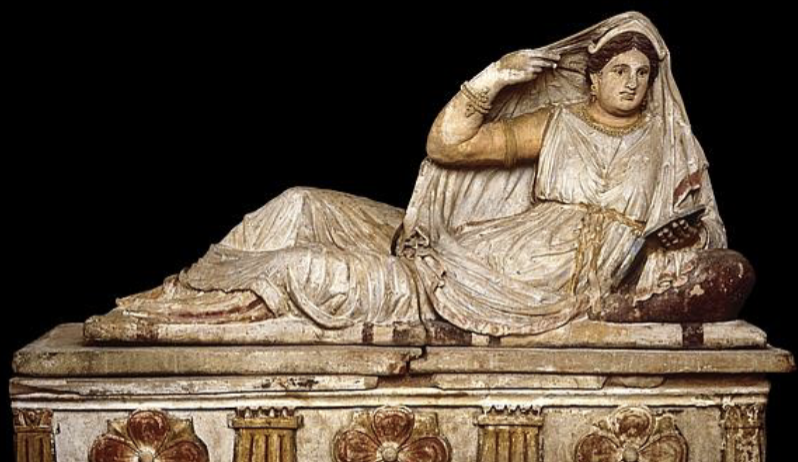
Sarcophagus of Seianti Hanunia Tlesnasa, from Poggio Cantarelli, near Chuisi c. 175-50 B.C., now in the British museum
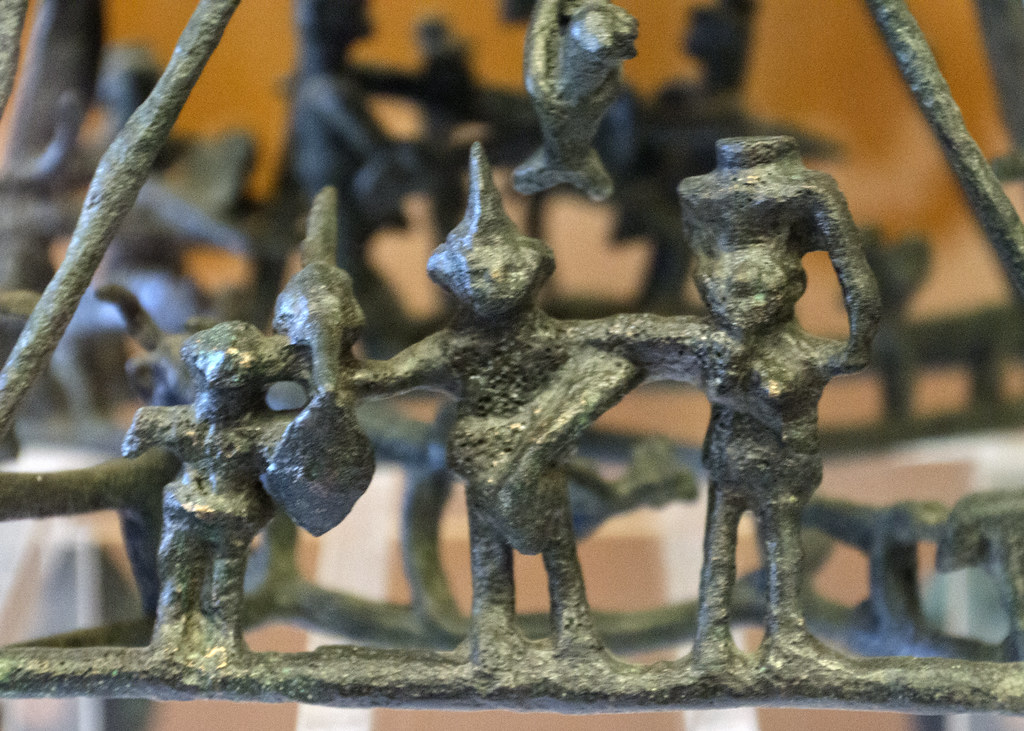
Bisenzio bronze-wheeled incense burner, late 8th c bc
Tabula Cortenensis
3rd-2nd centuries BC, record of land purchase or allocation by brothers Laris and Velche of the Cushu family /local aristocracy/ from the olive merchant petru scevas and his wife arntlei

Tomb of the Ship, c. 450 Tarquinia - showcases attic pottery on proud display, as well as silver vessels
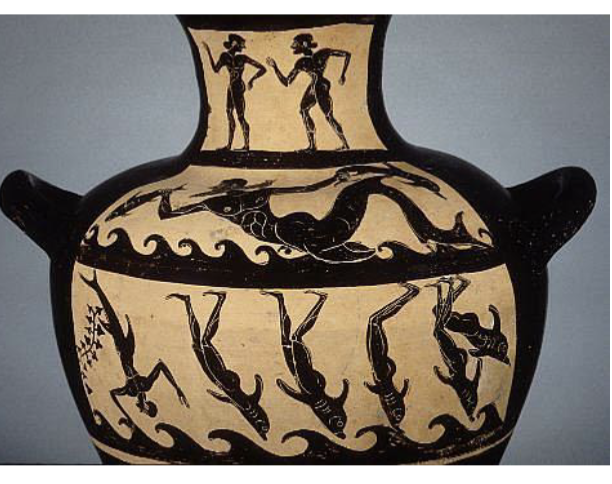
Black-figure hydria showing the transformation of Tyrrhenian pirates into dolphin, by (a follower of?) the Micali Painter, c.510-500 BC. Toledo Museum of Art. ost common is the suggestion that is a reference to the seventh Homeric Hymn, in which it is explained how Dionysus was kidnapped by Etruscanpirates, who were unaware of his identity. The god confuses their thoughts and causes them to jump into the water, where they transform into dolphins.
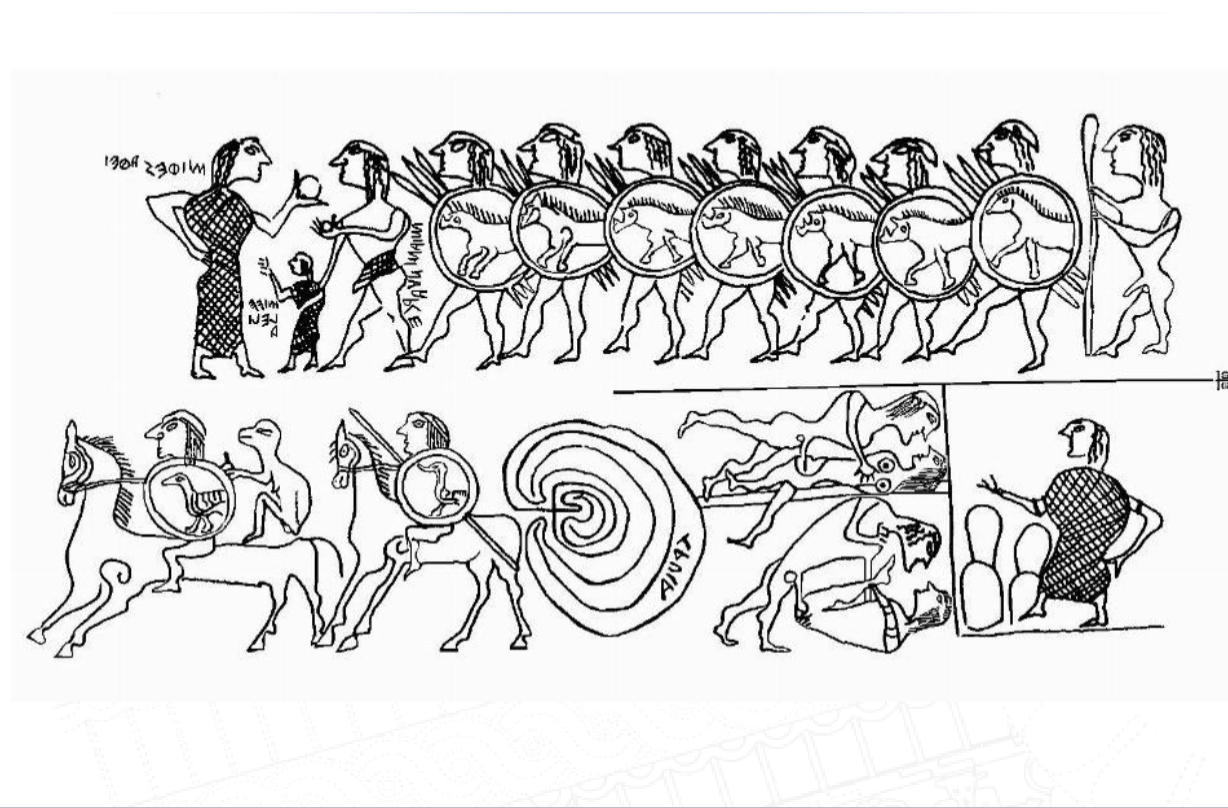
Tragliatella oinochoe/jug, c. 630-600 B.C., Etrusco-Corinthian now in Musei Capitolini
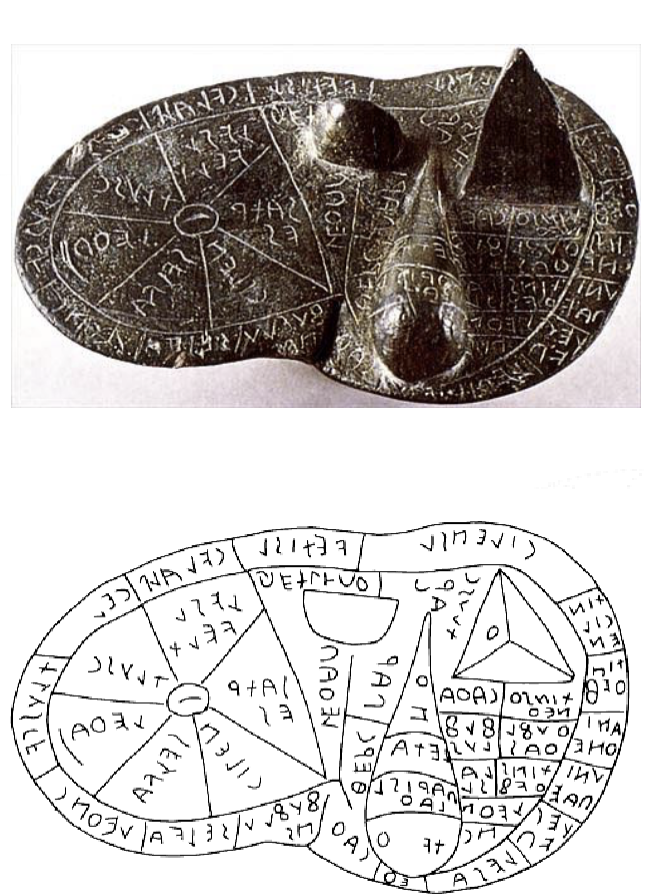
the piacenza liver, related to haruspacy, bronze model of a sheep’s liver, 3rd to 2nd century BC.
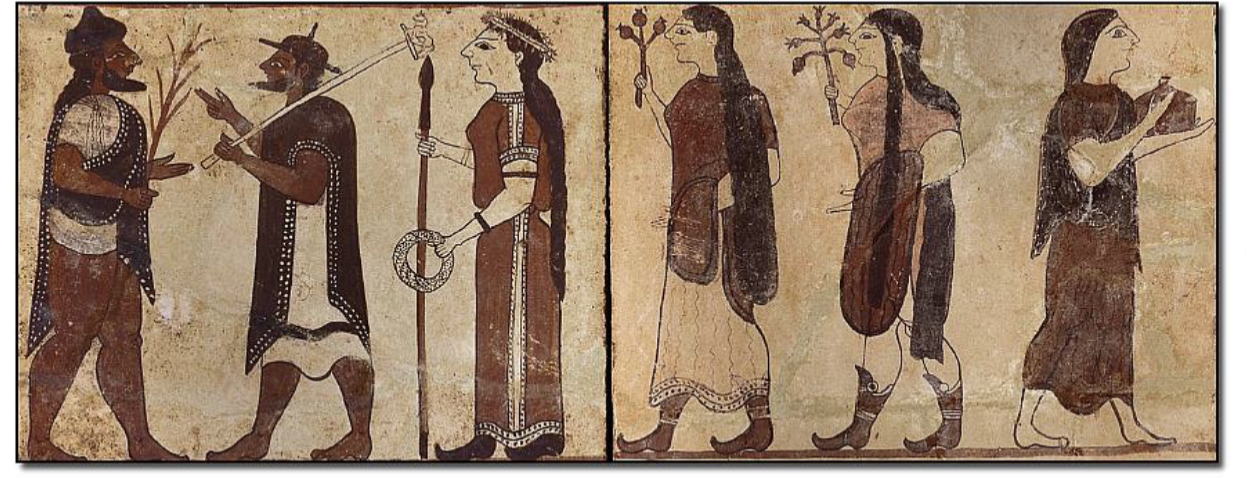
painted terracotta pannels, named the Boccanera Slabs, found in a small tomb in the Banditaccia necropolis, Caere, now also named the Boccanera tomb. showcases the judgement of Paris, Elsntre Elscntre is approached by Turms, leading Menrva, Uni and Turin; a servant with a cosmetic jar faces in the opposite direction. two pheonixes, and three more unknown women on the other side. c. 550.
Pian di Civita
10th c worship

Bronzes from Brolio, c. 600-550
Ara Della Regina
6-4th c bc, Tarquinia
Isis Tomb
c. 625-550, Vulci, chamber tomb
hese included blue faience flasks and scarabs with hieroglyphic inscriptions.
Four ostrich eggs, 4) were probably decorated by Phoenician artists in Lebanon.
There were also a large number of bronze vessels interred in the tomb, including cups, bowls, tripod-bowls, a cauldron, a lamp-stand, an amphora, a brazier and a cinerary urn.
Ceramic objects included a hydria, a large amphora and a kylix, and there was also a range of gold jewellery included a diadem.
Perhaps the most important objects buried in the tomb were a number of bronze and gypsum sculptures, including a half-life size statue of a noble lady, perhaps a depiction of the original occupant of the burial chamber. She is shown wearing a cloak and long tunic with traces of paint.
I
Tomb of the Whipping
C. 490, Monterozzi. whipping, doorway, vase, lion and deer fighting, dancers, komast whippig wearing ivy in his hair
Tomb of the Jugglers
end 6th c, funeral games for the deceased
Tomb of the Baron
late sixth centuty, Monterozzi. veiled woman approached twice, offered kylix, tutulus pointy hat.
Liber Linteus Zagrabiensis
longest Etruscan text and the only extant linenbook (libri lintei), dated to the 3rd century BC, ritual calander like the second longest surv etr text tabula Capuana.

Weird bronze trumpet dude
Vulci, Sardinian cast bronze statuette of a chief or priest found in a female tomb, c. 850-800. Now in Villa Giullia, Rome.

Young laying together
Larth Tetnies and Thanchvil Tarna, Ponte Rotto necropolis Vulci, c. 350-300 BC marble sarcophagus lid, now in the museum of fine arts Boston.

Old laying together
Marble sarcophagus lid of Ramtha Visnai and Arnth Tetnies, Ponte Rotto necropolis Vulci 350-300 bc. Now in the Museum of Fine Arts, Boston.
Orcus II
325 BC
ts entrance is guarded by paintings of "Charun" (Charon), the keeper of the underworld, and a cyclops (possibly Polyphemus or Geryon), a funeral procession overseen by "Aita" (Hades), the Etruscan god of the underworld, and his wife
"Phersipnei" (Persephone). The left wall is believed to depict Agamemnon, Tiresias, and Ajax in the underworld.
"Thesel, (Theseus) and the Etruscan equivalent of Pirithousare seated at a table on the right wall, playing a board game, where they are threatened by the Etruscan demon "Tuchulcha", who is pictured with pointed ears, a hairy face, and a hooked beak, wielding snakes in his hands. The tomb is unique in that it bears the only known historical portrayal of this demon.
Tomb of the ship
mid-fifth c, Tarquinia. The left wall presents a striking depiction of a sailing cargo ship with two masts, giving the tomb its name. Adjacent to it is a smaller single-masted ship, both set against a seascape enclosed by high rocks. On the right side of the scene, the tomb's owner is portrayed, attentively observing the ships. Greek and Etruscan vases.
Orvieto necropolis
Crocitisso del Tufo is an Etruscannecropolis in Orvieto,
It is dated to at least the 6th century because of inscriptions found at the site, 2) it was attended from the 8th to the 3rd centuries B.C. (3-owever, its apex of development was in the 6th and 5th centuries 13) it is to this time that the layout of the necropolis, grouped in blocks, is dated 3) it consists of over 200 tombs.*) The burials were fashioned from the local stone-like amalgam called tuff, a mixture of lava and ash. 24)
They are of chamber" type, mostly arranged in a network of sepulchral streets, forming an orthogonal system. 2)
The lots defined by orthogonal intersecting roads that were occupied by tombs of the cubic kind-*a dado® like dice-follow a rigid disposition reflecting a social organization of an egalitarian kind.
Golini I tomb
4th c bc, Orvieto. Golini I has a room that is divided into two distinct halves by a wall.
The walls on the left-hand side of the room depict people preparing a banquet. The walls on the right-hand side of the room depict the actual feast, with people eating and drinking, and enjoying the music of flute-players. a man arrives on a chariot, just in time to take part in the feast. Painted letters identify him as Larth Leinies, for whom the tomb must have originally been made. Letters also identify the man presiding over the banquet proceedings as Eita (i.e. Hades), wearing a wolfskin cap. He is flanked by his wife, Phersipnal (i.e. Persephone). Some of the banqueters are identified as members of Larth's family, including his father and an uncle. BANQUET
Tomb of the Bigas
490 bc, Monterrozzi
funeral games are represented and it is the only case where all the races that were in use in Greece and the typically Etruscan 'Phers' game are represented.
At the corners, two wooden platforms with a canopy are depicted, from which numerous people, men and women, are shown watching the races and engaged in lively conversations.
Below the platform, there are servants lying down who are following the races. banquet w servants, erotic cartouche and mixed attendance.
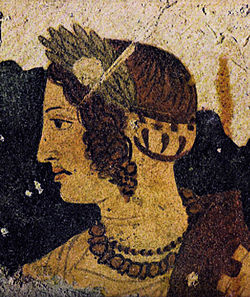
Tomb of orcus I
mage
Record
C. 470 Tarquinia banquet, noblewoman Velia Velcha.
Tomb of the bulls
530 BC, sex scenes
Another fresco is situated horizontally between the two doorways, in the center of the wall. It portrays the ambush of Troilus by Achilles. On the left, Achilles is shown armed with a sword and spear and wearing a helmet, greaves and a loincloth. He hides behind several plants and a large fountain. Troilus approaches from the right on a horse, unaware of the presence of Achilles. Troilus is naked but armed with a long spear. The event precedes the pursuit and slaying of Troilus by Achilles at the altar of Apollo.
R. Ross Holloway similarly notes the Etruscan influence on the portrayal of Greek mythology. However, he proposes that the scene emphasizes the death of Troilus as a sacrifice. This image would have served to honor and placate the dead in perpetuity.
He points out that the sword of Achilles is a single-edged sacrificial knife rather than a double-edged sword. Scenes of slaughter are not uncommon in Etruscan funerary art.
A fresco of the sacrifice of the Trojanyouths by Achilles at the pyre of Patroclus in the François Tomb is an example of this.
Also Holloway proposes that the erotic groups have an apotropaic purpose to protect from the evil eye. This is consistent with the presence of animals which protect against the evil eye on the frescoes. He identifies the man-headed bull as Achelous, adding that the horns of the bulls and the phallus are weapons against the evil eye Steingäber, who thinks the scenes were life-affirming, to be interpreted in clear contrast to the symbolism of death.
Sarcophagus of the Amazons
Tarquinia, 4th c BC alabaster, inscription identifies it as belonging to Ramtha Huzcnai, now in the Florence Archaeological museum. amazonomachy. The Greek artisans used the white limestone alabaster stone, a type that does not exist in Etruria, and other decoration features that have no comparison in the Etruscan context.
Tomb of the Blue Demons
end of the fifth century. Monterozzi necropolis, male deceased riding a biga accompanied by a procession of musicians. on the other side a female deceased.
Charun and a veiled woman and a young boy who, having just landed on the banks of Hades, advance greeted by other characters. banquet, journey to the underworld, psychopomp and protective demons, and harmful black demon.
Tomb of the Leopards
Monterrozzi, 470 bc, banquet, leopards, revelry, kylix, oinochoe
Tomb of the Augurs
530 bc, Monterozzi, includes phers figures, bloodletting, wrestling, a doorway surrounded by grieving family members or augurs, and an agonothetes carrying a lituus, and likely the deceased himself followed by a servent carrying a curule seat, folding chair and a mourning figure
Tomb of the hunting and fishing
520, Monterozzi necropolis - fishing, sea, boat, banquet, hunt scene, banquet with woman wearing a tumulus and the husband holding a patera, servent pouring wine from a krater, diver, sea scene, often compared to the Tomb of the Diver at Paesty
c. 500. focus on the natural environment.
Tomb of the Triclinium
end of the fifth century. Monterozzi necropolis, male deceased riding a biga accompanied by a procession of musicians. on the other side a female deceased.
Charun and a veiled woman and a young boy who, having just landed on the banks of Hades, advance greeted by other characters. banquet, journey to the underworld, psychopomp and protective demons, and harmful black demon.
Tomb of the Hanging Aryballos
6th c bc, Tarquinia. Woman bearing a spear on the larger platform, male partially incinerated skeleton on the smaller platform.
Throne of the young princess
In the Moroni Tomb 26 in Verucchio, a three year old girl was buried with a decorated throne most resembling that of the famous Verucchio throne of Lippi Tomb 89. Also dates to the 7th c.